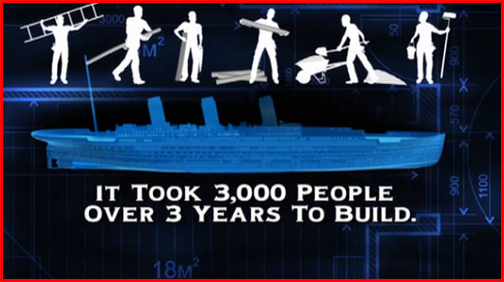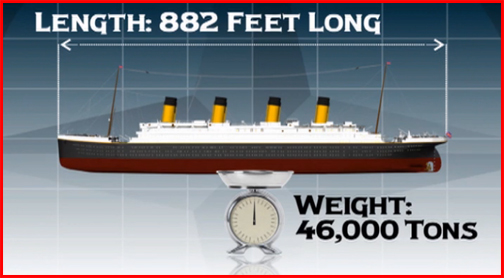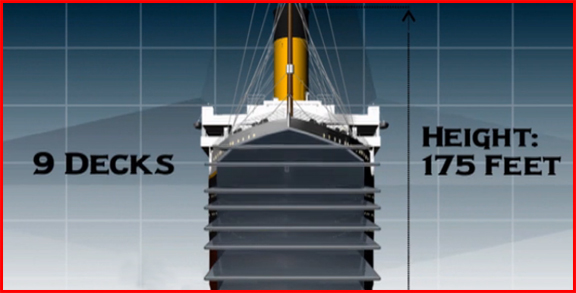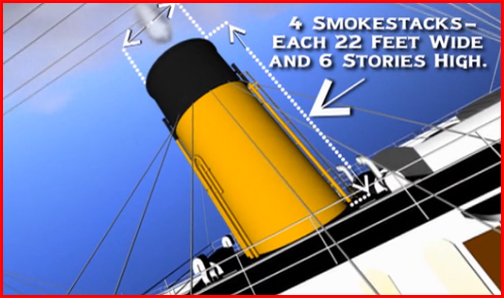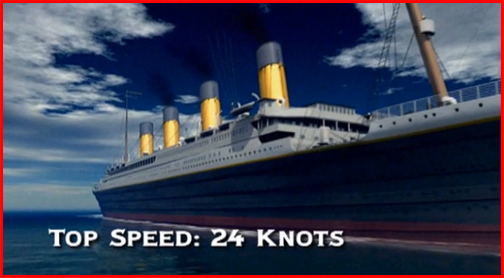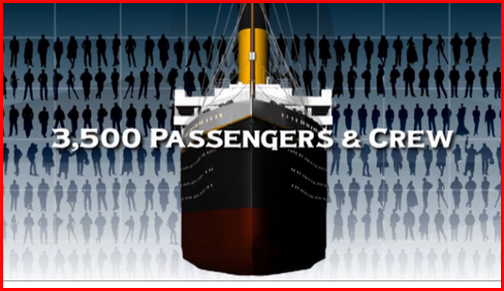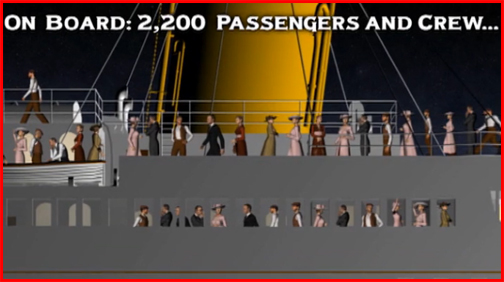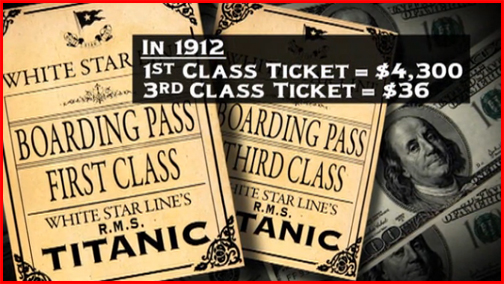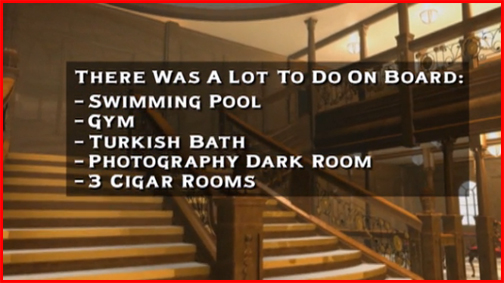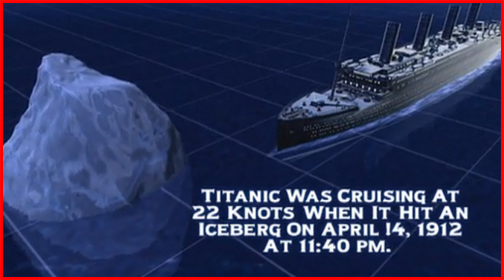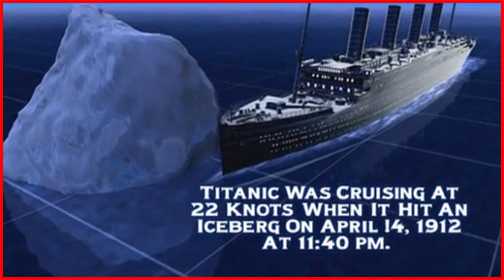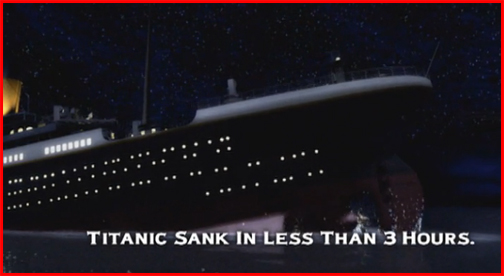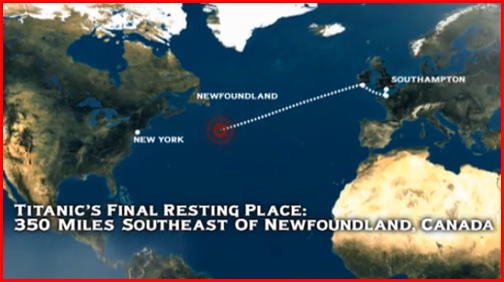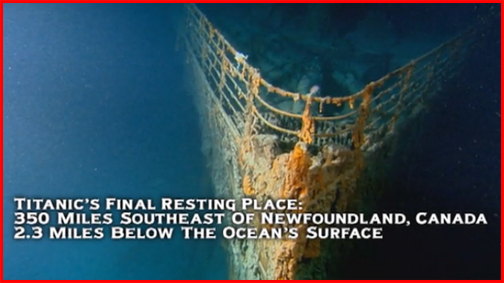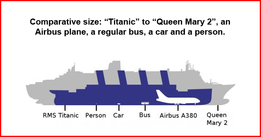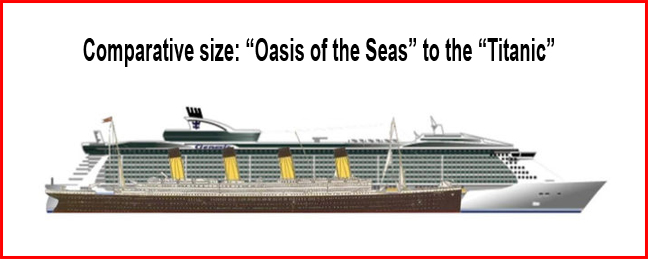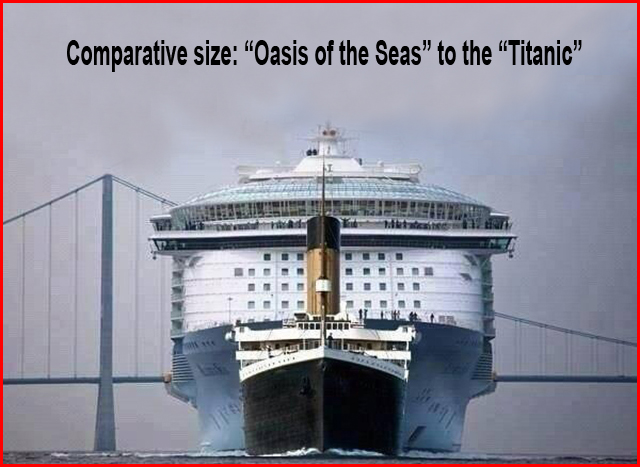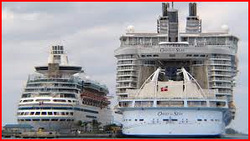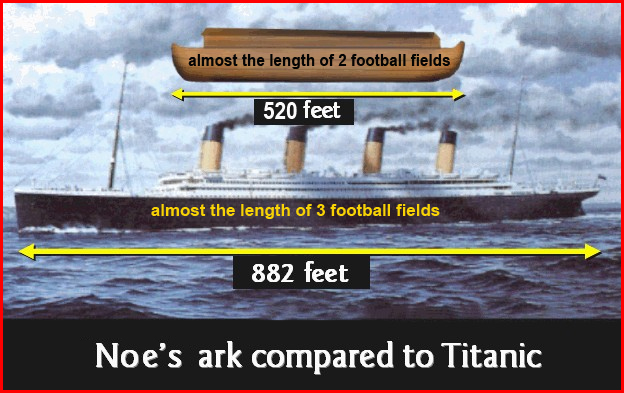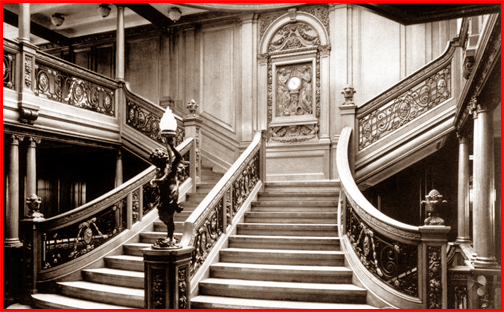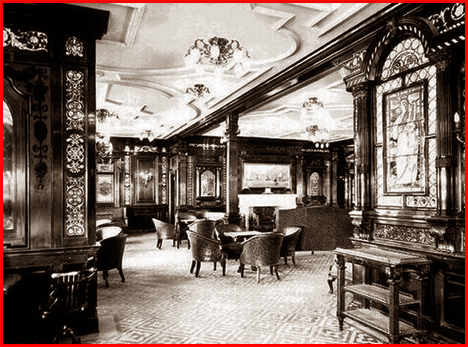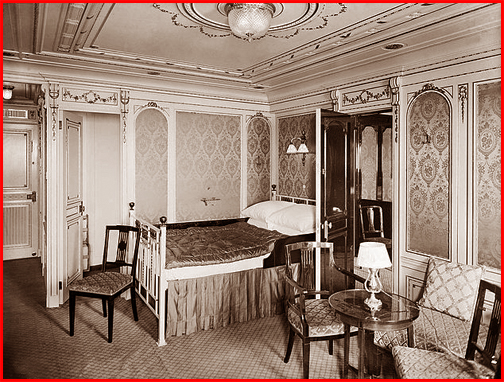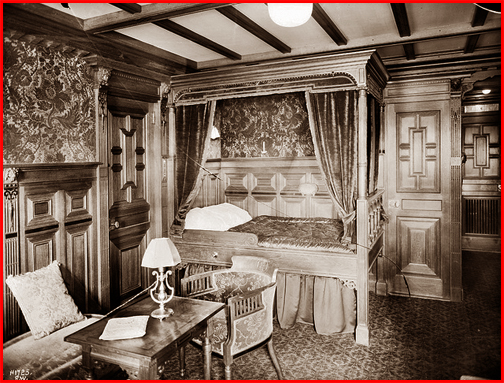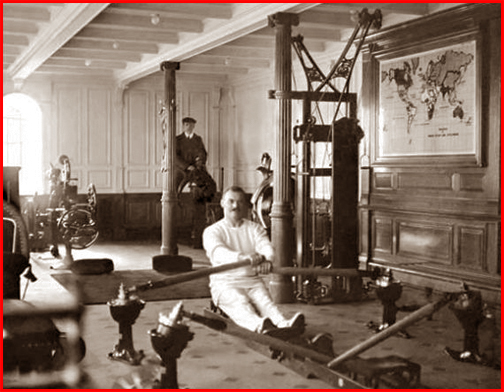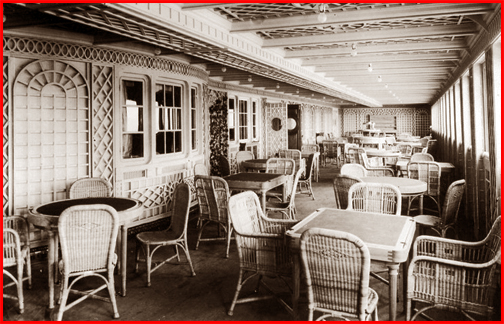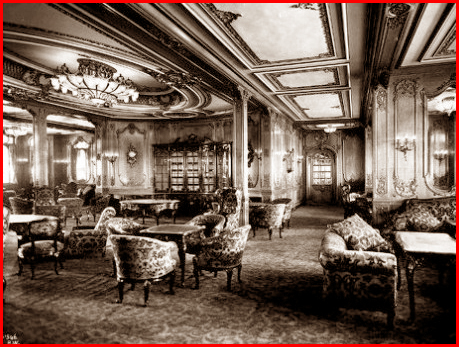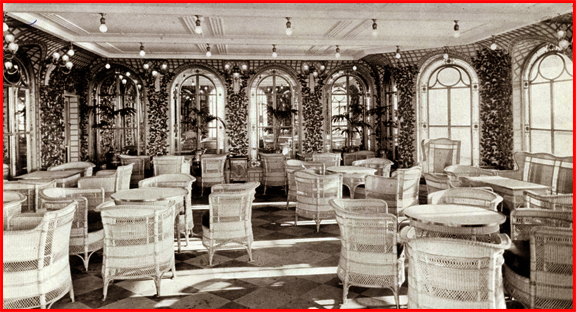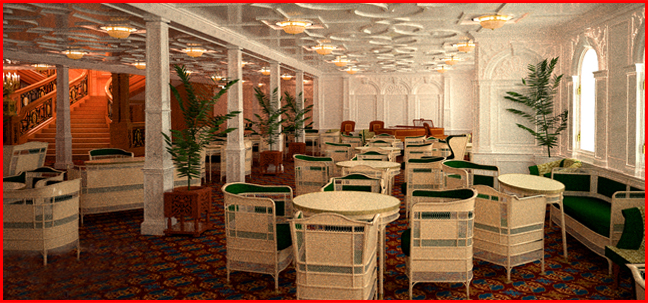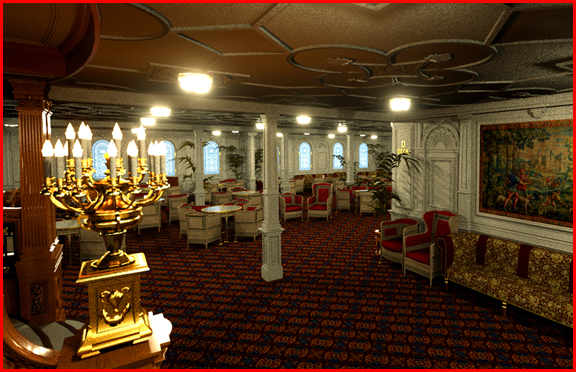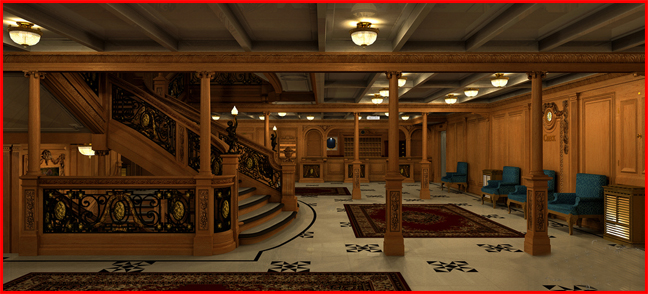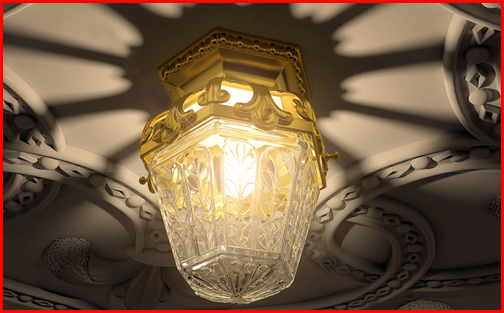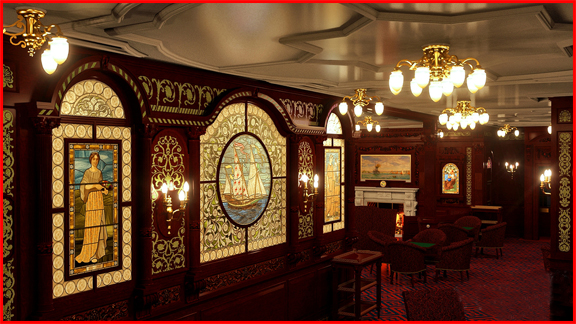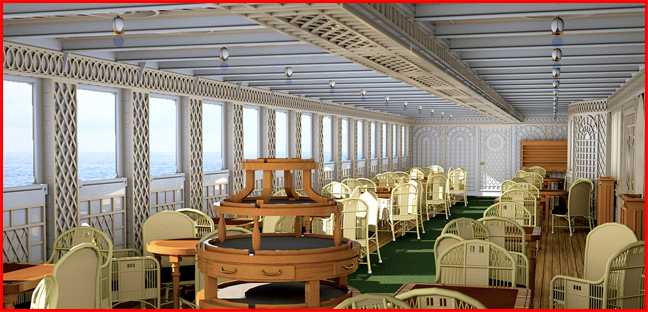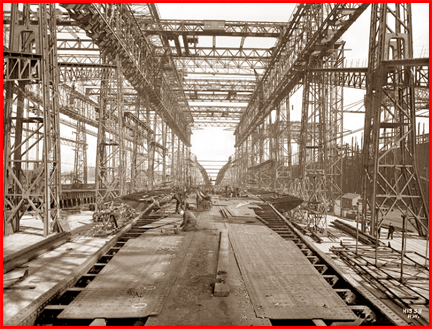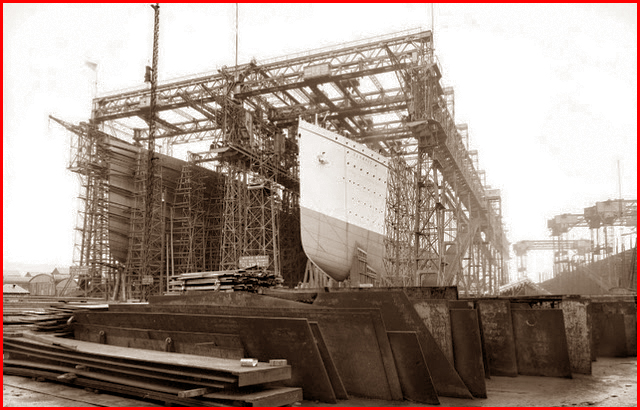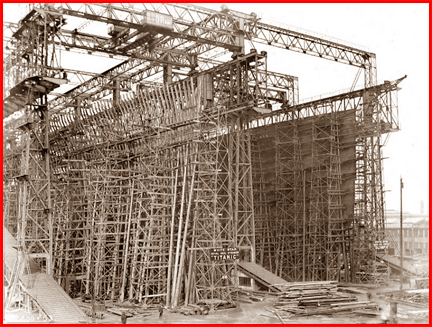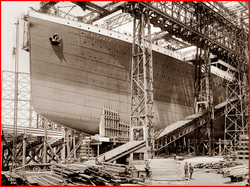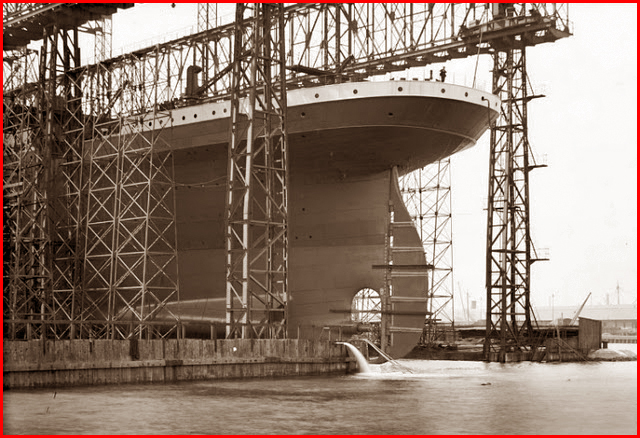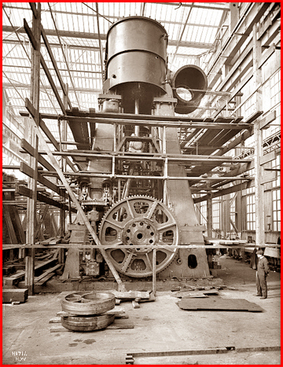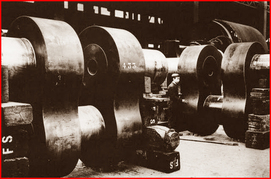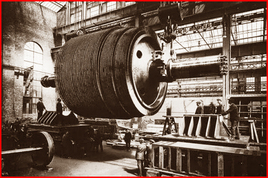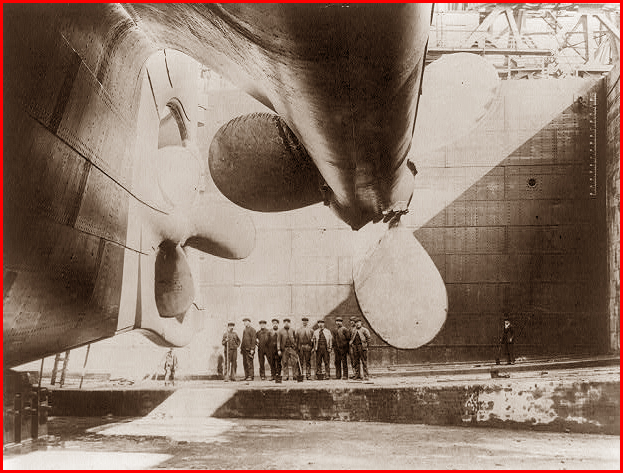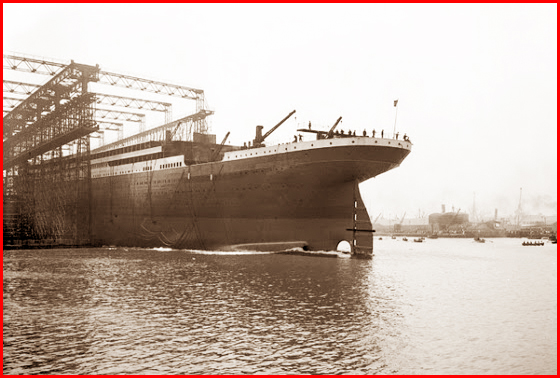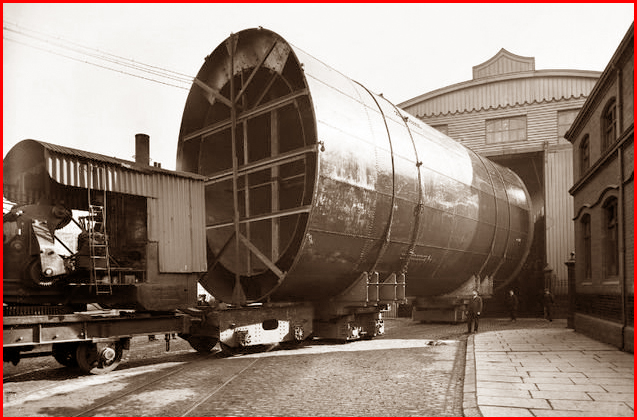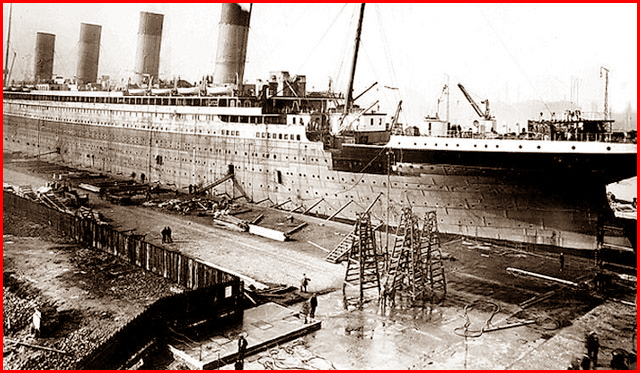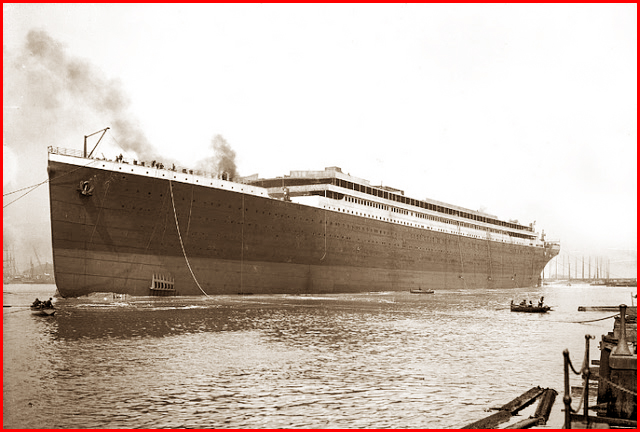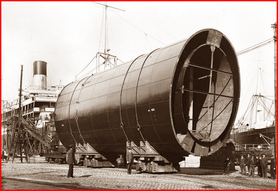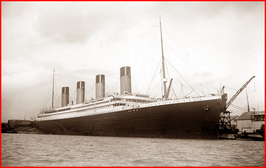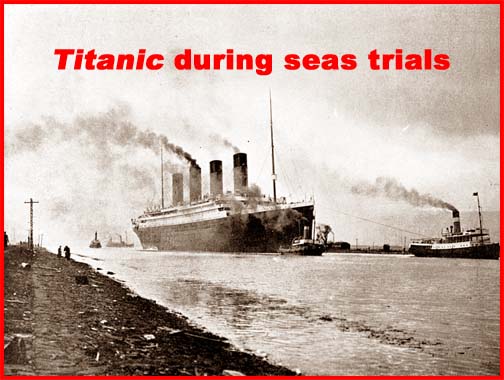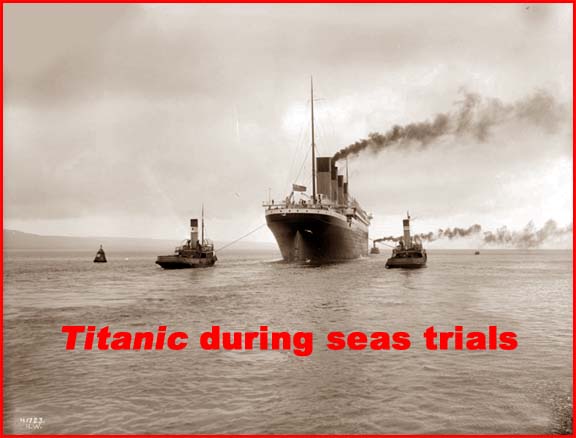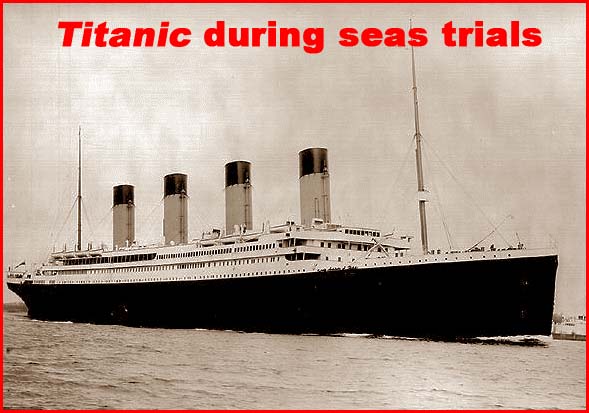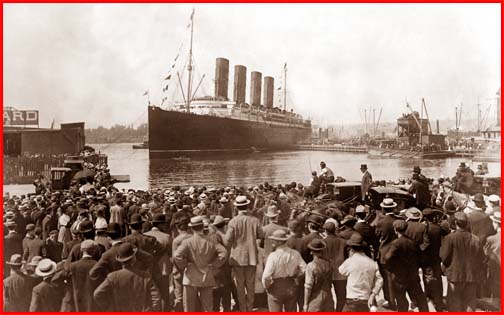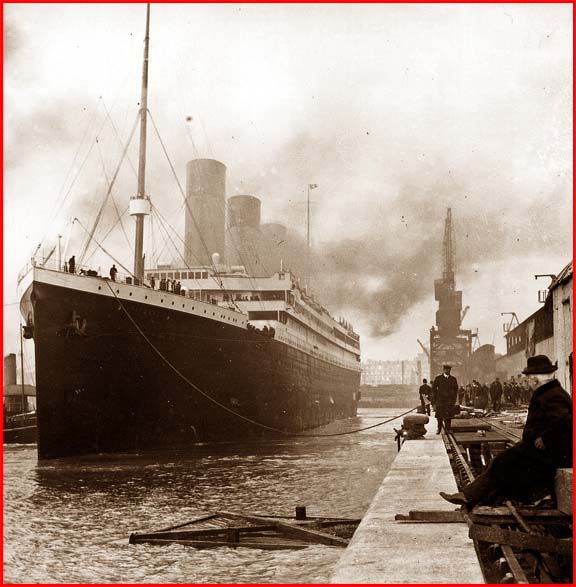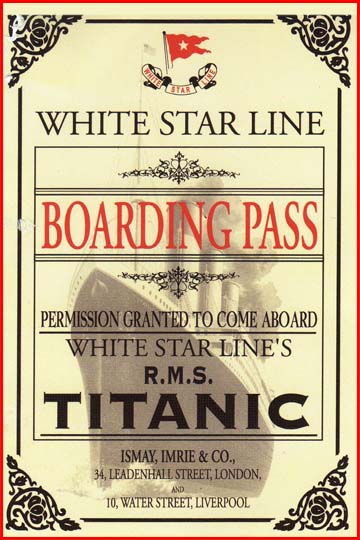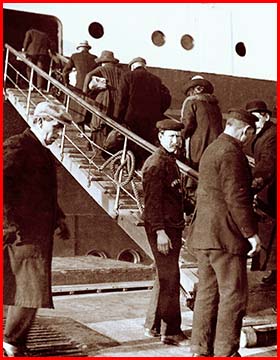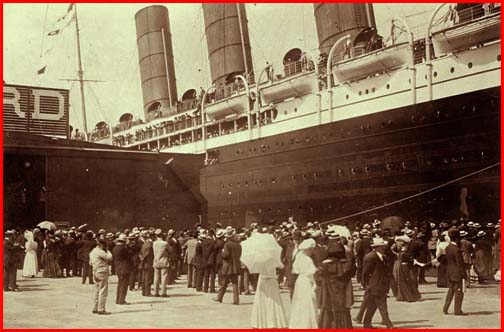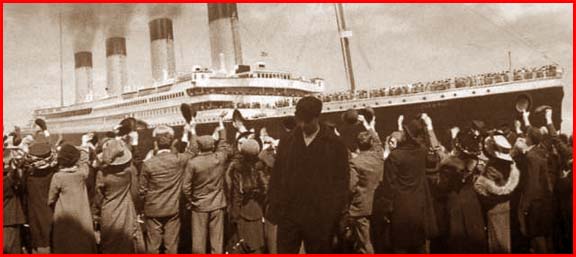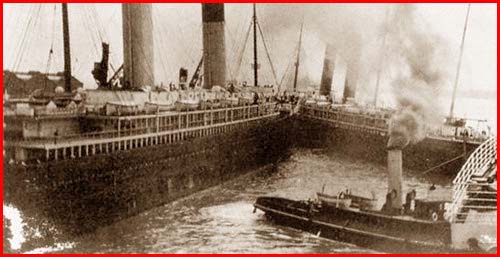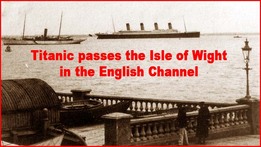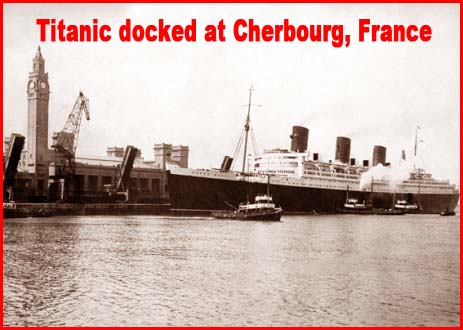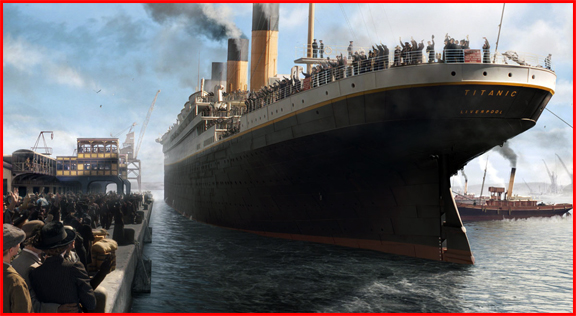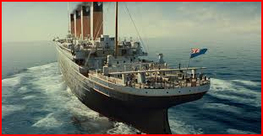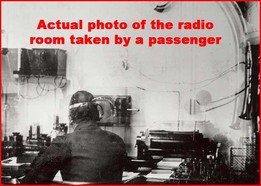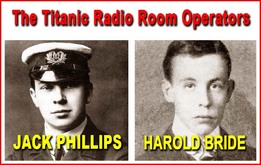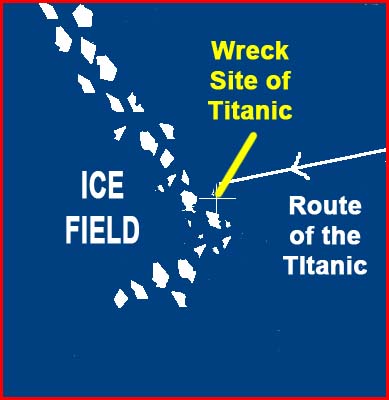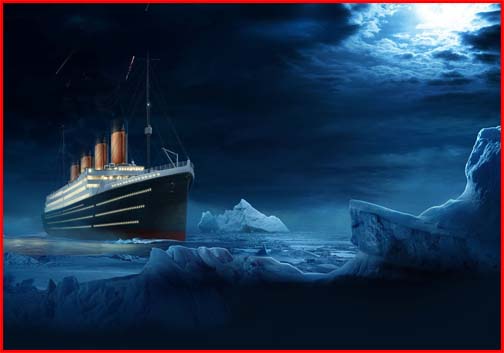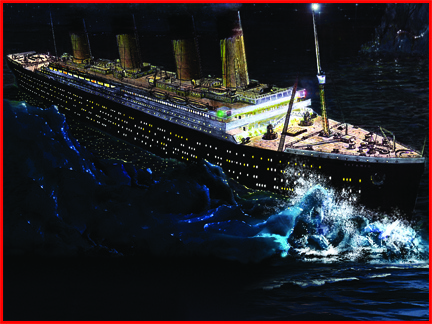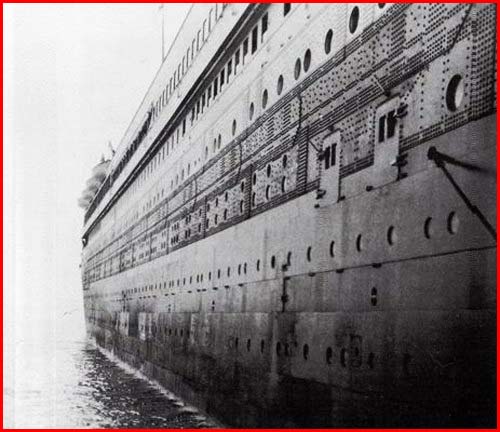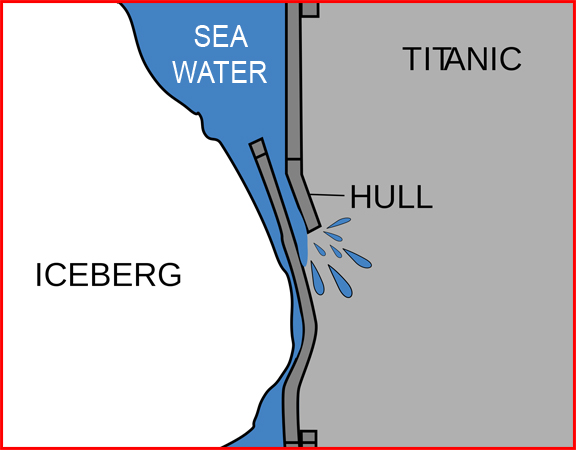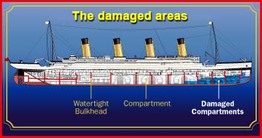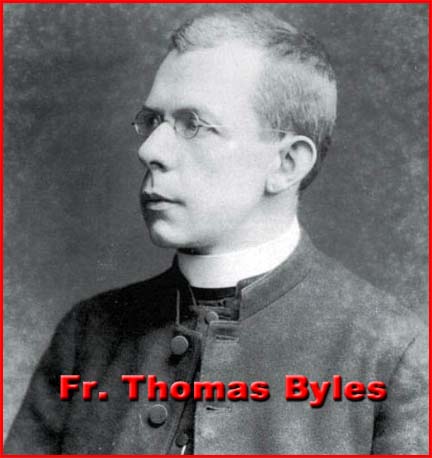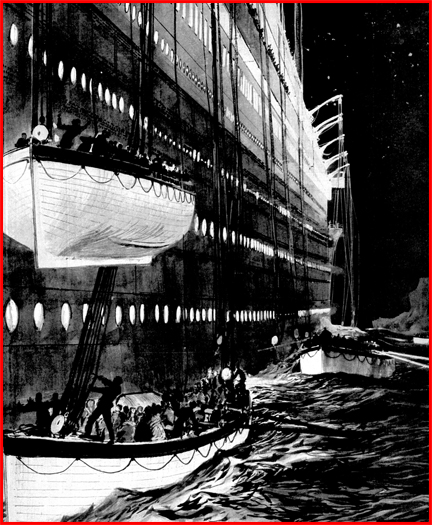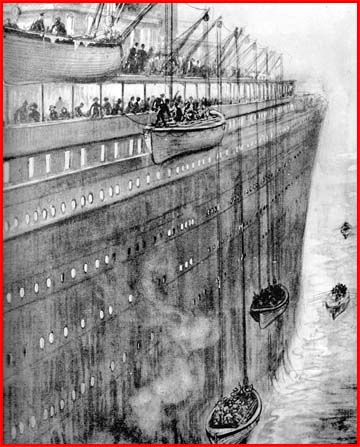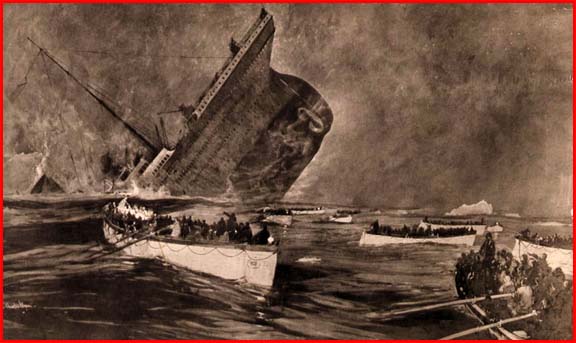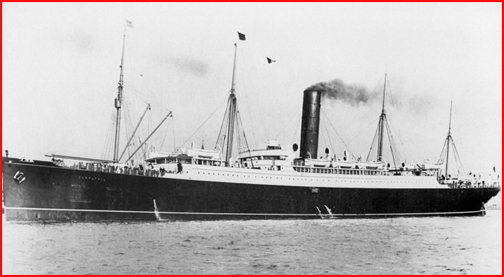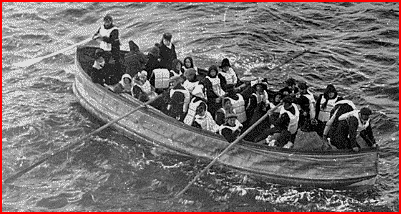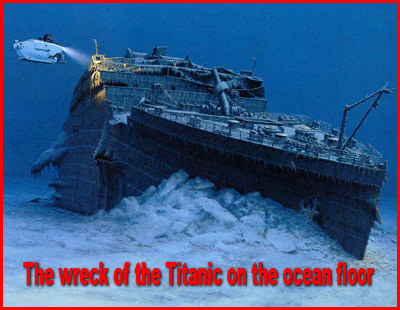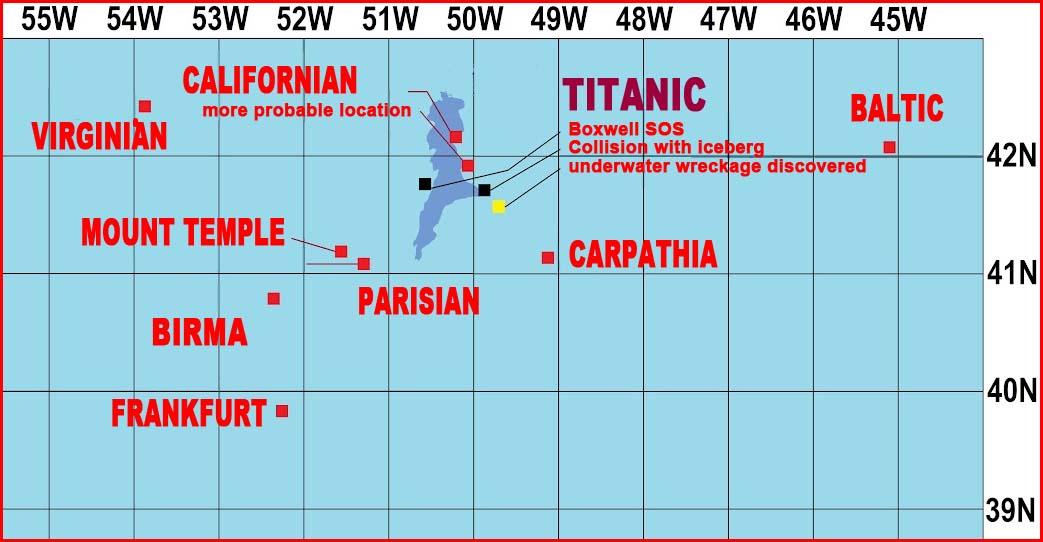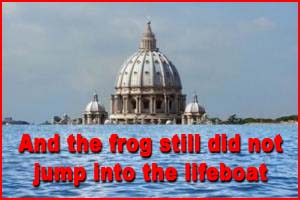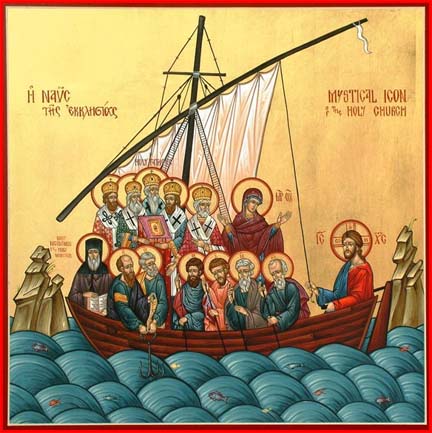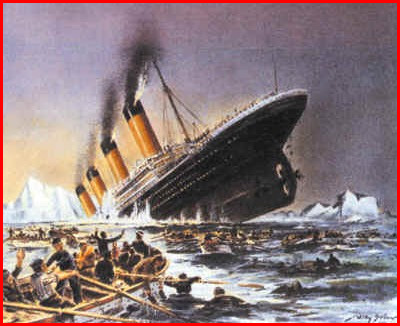| Devotion to Our Lady |
|
- Homepage
-
Daily Thoughts
- 2023 October Daily Thoughts
- Daily Thoughts Lent 2020
- Daily Thoughts for Advent 2019
- Daily Thoughts for October 2019
- Daily Thoughts for September 2019
- Daily Thoughts for August 2019
- Daily Thoughts for July
- Daily Thoughts for June
- Daily Thoughts for Easter 2019
- Daily Thoughts for Lent 2019
- Daily Thoughts for Christmas
- Daily Thoughts Easter 2022
- Sacred Heart
- Holy Ghost
-
Spiritual Life
- Holy Mass Explained
- First Friday Devotions
- First Saturday Devotions
- The Mercy of God
- Vocations
- The Path Everyone Must Walk >
- Gift of Failure
- Halloween or Hell-O-Ween?
- Ignatian Spiritual Exercises >
- Meditation is Soul-Saving
- Spiritual Communion
- Miraculous Medal
- Enrollment in Miraculous Medal
- St. Benedict Medal
- Holy Water
- Advice on Prayer
- Your Daily Mary
-
Prayers
- September Devotions
- Seven Sorrows of Our Lady
-
Novenas
>
- NV-Help of Christians
- NV-Nativity of Our Lady
- NV-Seven Sorrows
- NV- Sorrowful Heart
- NV-Pope St Pius X
- NV-La Salette
- NV-St Michael Archangel
- NV-Immaculate Heart
- NV-Assumption
- NV-Novena for Fathers
- NV-Novena for Your Mother
- NV-St Raphael Archangel
- NV-Souls in Purgatory
- NV-All Saints Day
- NV-Christ the King
- NV-Divine Motherhood
- NV-Guardian Angels
- NV-Rosary
- NV-Mirac Med
- NV- Imm Conc
- NV - Guadalupe
- NV - Nativity of Jesus
- NV-Epiphany
- NV-OL Good Success
- NV-Lourdes
- NV-St Patrick
- NV-St Joseph
- NV-Annunciation
- NV-St Louis de Montfort
- NV-OL Good Counsel
- NV-Last Supper
- NV-Passion
- NV-Pentecost
- NV-Ascension
- NV-Sacred Heart
- NV-Sacred Heart & Perpetual Help
- NV-Corpus Christi
- NV-OL of Perpetual Help
- NV-Queenship BVM
- NV-OL of Mount Carmel
- NV-St Mary Magdalen
- NV- Im Hrt
- August Devotions to IHM
- Immaculate Heart of Mary
- Litany of Dependence
- Prayers to St Mary Magdalen
- Prayers in Times of Sickness Disease & Danger
- Holy Souls in Purgatory
- Meditations on the Litany of Our Lady
- Special Feast Days
- Prayers to Mary (Mon-Sun)
- Litanies to Our Lady >
- Various & Special Needs
- Our Lady of the Rosary
- Our Lady of Mt. Carmel
- Our Lady of Perpetual Help
- Our Lady of Guadalupe
- Other titles of Our Lady
-
Rosary
- Downloads
- Consecration
- Easter Season
-
Holy Week
- Last Seven Words of Jesus >
- Characters of Passion >
- The Last Days of Christ
- Before Palm Sunday
- Palm Sunday
- Monday in Holy Week
- Tuesday in Holy Week
- Wednesday in Holy Week
- Holy Thursday (Last Supper)
- Holy Thursday (Agony & Arrest)
- Night Vigil with Christ
- Good Friday (Pilate & Herod)
- Good Friday (Way of Cross & Crucifixion)
- Saturday in Holy Week
-
Lent
- Ideas for Lent
- Daily Lenten Planner
- Daily Lenten Liturgy
- From Cold to Hot
- Lent with Aquinas
- Lent with Dom Gueranger
- Virtues for Lent
- History of Penance
- How Expensive is Sin?
- Confession of Sins
- Letter to Friends of the Cross
- Sermons for Lent
- Stations of the Cross >
- Lenten Prayers
- 7 Penitential Psalms
- Lenten Psalms SUN
- Lenten Psalms MON
- Lenten Psalms TUE
- Lenten Psalms WED
- Lenten Psalms THU
- Lenten Psalms FRI
- Lenten Psalms SAT
- Lenten Laughs
- Septuagesima
-
Christmas
- Epiphany Explained
- Suggestions for Christmas
- Food For Thought
- Christmas with Aquinas
- Christmas with Dom Gueranger
- Christmas Prayers
- Candles & Candlemas
- Christmas Sermons
- Christmas Prayers SUN
- Christmas Prayers MON
- Christmas Prayers TUE
- Christmas Prayers WED
- Christmas Prayers THU
- Christmas Prayers FRI
- Christmas Prayers SAT
- Twelve Days of Christmas >
-
Advent Journey
- Purgatory
- Christ the King
- Legion of Mary
- Scapular
-
Saints
-
Martyrs for the Faith
>
- Your Daily Martyr >
- All 365 Days of Martyrs
- Cristeros
- St Valentine & Valentine's Day
- Martyrs--Thomas Becket
- Martyrs--John the Apostle
- Holy Machabees
- Age of Martyrdom
- Carmelites of Compiegne
- Martyrs--Peter & Paul
- Martyrs--John the Baptist
- Martyrs--Andrew
- Martyrs--James the Great
- Martyrs--North American
- Martyrs--Seven Holy Sleepers
- Martyrs--Afra
- School of Martyrdom
- Martyrs--Christina
- Desert Saints >
- Saints for Sinners >
- Saints of Mary >
- History of All Saints Day
-
Martyrs for the Faith
>
- Precious Blood
- Synod 2023
-
Catechism
- Catechism Lesson 1
- Catechism Lesson 2
- Catechism Lesson 3
- Catechism Lesson 4
- Catechism Lesson 5
- Catechism Lesson 6
- Catechism Lesson 7
- Catechism Lesson 8
- Catechism Lesson 9
- Catechism Lesson 10
- Catechism Lesson 11
- Catechism Lesson 12
- Catechism Lesson 13
- Catechism Lesson 14
- Catechism Lesson 15
- Catechism Lesson 16
- Catechism Lesson 17
- Catechism Lesson 18
- Catechism Lesson 19
- Catechism Lesson 20
- Catechism Lesson 21
- Catechism Lesson 22
- Bible Study
-
Calendar
- Miracles
- Apparitions
- Shrines
- Prophecies
- Angels Homepage
- Hell
-
Church Crisis
- Conspiracy Theories
- Amazon Synod 2019 >
- Liberalism & Modernism
- Modernism--Encyclical Pascendi
- Modernism & Children
- Modernism--Documents
- The Francis Pages
- Church Enemies on Francis
- Francis Quotes
- Amoris Laetitia Critique
- Danger of Ignorance (Pius X)
- Restore all In Christ (Pius X)
- Catholic Action (Pius X)
- Another TITANIC Disaster?
- The "Errors of Russia"
- CRISIS PRAYERS
- Election Novena 2024
- The Anger Room
- War Zone
- Life of Mary
- Spiritual Gym
- Stupidity
- Coronavirus and Catholicism
- History & Facts
- Books
- Catholic Family
- Children
- Daily Quiz
-
Novena Church & Pope
- Day 01 Church-Pope Novena
- Day 02 Church-Pope Novena
- Day 03 Church-Pope Novena
- Day 04 Church-Pope Novena
- Day 05 Church-Pope Novena
- Day 06 Church-Pope Novena
- Day 07 Church-Pope Novena
- Day 08 Church-Pope Novena
- Day 09 Church-Pope Novena
- Day 10 Church-Pope Novena
- Day 11 Church-Pope Novena
- Day 12 Church-Pope Novena
- Day 13 Church-Pope Novena
- Day 14 Church-Pope Novena
- Day 15 Church-Pope Novena
- Day 16 Church-Pope Novena
- Day 17 Church-Pope Novena
- Day 18 Church-Pope Novena
- Day 19 Church-Pope Novena
- Day 20 Church-Pope Novena
- Day 21 Church-Pope Novena
- Day 22 Church-Pope Novena
- Day 23 Church-Pope Novena
- Day 24 Church-Pope Novena
- Day 25 Church-Pope Novena
- Day 26 Church-Pope Novena
- Day 27 Church-Pope Novena
- Day 28 Church-Pope Novena
- Day 29 Church-Pope Novena
- Day 30 Church-Pope Novena
- Day 31 Church-Pope Novena
- Day 32 Church-Pope Novena
- Day 33 Church-Pope Novena
- Day 34 Church-Pope Novena
- Day 35 Church-Pope Novena
- Day 36 Church-Pope Novena
- Day 37 Church-Pope Novena
- Day 38 Church-Pope Novena
- Day 39 Church-Pope Novena
- Day 40 Church-Pope Novena
- Day 41 Church-Pope Novena
- Day 42 Church-Pope Novena
- Day 43 Church-Pope Novena
- Day 44 Church-Pope Novena
- Day 45 Church-Pope Novena
- Day 46 Church-Pope Novena
- Day 47 Church-Pope Novena
- Day 48 Church-Pope Novena
- Day 49 Church-Pope Novena
- Day 50 Church-Pope Novena
- Day 51 Church-Pope Novena
- Day 52 Church-Pope Novena
- Day 53 Church-Pope Novena
- Day 54 Church-Pope Novena
- Penance Novena
- Daily WeAtheR Forecast
THE CRISIS IN THE CHURCH
Click on any link below
| Church Crisis | Liberalism & Modernism | Modernism & Children | Encyclical on Modernism, Pascendi (Pius X) |
| Modernist Documents | The Francis Pages | Church Enemies on Francis | Francis Quotes |
| Amoris Laetitia Critiqued (Pope Francis) | Dangers of Ignorance (Pius X) | Restoring All Things In Christ (Pius X) |
Catholic Action (Pius X) | Syllabus of Errors (Pius X) | Syllabus of Errors (Pius IX) |
| Another Titanic Disaster | The "Errors of Russia" | Conspiracy Theories |
Other related links
THE 2019 PAN-AMAZON SYNOD OF BISHOPS
Rome, October 6th to October 27th
Click on any link below
| General Articles on the Synod | Amazon Synod Daily Updates | Synod Sequel | Pagan Idols Destroyed |
| The Instrumentum Laboris or Working Document of the Synod | The Final Document of the Synod |
| CCC Crazy Comments Critiqued |
Click on any link below
| Church Crisis | Liberalism & Modernism | Modernism & Children | Encyclical on Modernism, Pascendi (Pius X) |
| Modernist Documents | The Francis Pages | Church Enemies on Francis | Francis Quotes |
| Amoris Laetitia Critiqued (Pope Francis) | Dangers of Ignorance (Pius X) | Restoring All Things In Christ (Pius X) |
Catholic Action (Pius X) | Syllabus of Errors (Pius X) | Syllabus of Errors (Pius IX) |
| Another Titanic Disaster | The "Errors of Russia" | Conspiracy Theories |
Other related links
THE 2019 PAN-AMAZON SYNOD OF BISHOPS
Rome, October 6th to October 27th
Click on any link below
| General Articles on the Synod | Amazon Synod Daily Updates | Synod Sequel | Pagan Idols Destroyed |
| The Instrumentum Laboris or Working Document of the Synod | The Final Document of the Synod |
| CCC Crazy Comments Critiqued |
LEARNING FROM HISTORY
They say that if we do not learn, know and remember our history, then we will learn it and know it by repeating it! Are we on the verge of the sinking of the Titanic Church? Will Holy Mother Church sink beneath the waves of worldliness, materialism, sensuality, Modernism, Liberalism, neo-paganism and the plots and plans of Her enemies?
In this series of articles, which could also be called "The Titanic Revisited", an attempt will be made to liken the voyage of the Titanic to the voyage of the Ark of the Church since the Second Vatican Council. There are many striking parallels to be found and many salutary lessons to be learnt. Come aboard and let us set sail.
They say that if we do not learn, know and remember our history, then we will learn it and know it by repeating it! Are we on the verge of the sinking of the Titanic Church? Will Holy Mother Church sink beneath the waves of worldliness, materialism, sensuality, Modernism, Liberalism, neo-paganism and the plots and plans of Her enemies?
In this series of articles, which could also be called "The Titanic Revisited", an attempt will be made to liken the voyage of the Titanic to the voyage of the Ark of the Church since the Second Vatican Council. There are many striking parallels to be found and many salutary lessons to be learnt. Come aboard and let us set sail.
THESE ARTICLES WILL BE KEPT IN CHRONOLOGICAL ORDER
The Latest Article is Found at the Bottom of This Page
The Latest Article is Found at the Bottom of This Page
Article 1
THE SPIRIT BEHIND THE TITANIC
THE SPIRIT BEHIND THE TITANIC
|
BRIEF PICTURE STORY
TITANIC'S
COMPARATIVE SIZE THE INTERIOR OF
THE TITANIC Competition had spawned the Titanic. In 1907, the White Star Line's rival, Cunard, launched the two fastest passenger ships then in service, the Mauritania and the Lusitania. That same year, the White Star Line's Chairman, J. Bruce Ismay, wanted to top Cunard, and he decided to do so based, not on speed but on size and luxury. Here are some pictures giving an example of the luxury that was put into the Titanic.
|
WHAT LIFE WAS LIKE IN THE WORLD AND AMERICA IN 1912
● Pope St. Pius X was the reigning pope in Rome
● William Howard Taft was the US President at the time ● King George V was the reigning monarch in England ● US population was 95 million (today 324 million). ● UK population was 41 million (today 59 million) ● The population of Las Vegas, Nevada, was 30. ● There were only about 230 reported murders nationwide in the USA. ● US Life expectancy for women is 51.8 and 48.4 for men. ● The leading causes of death in the USA: Pneumonia, influenza, Tuberculosis, Diarrhea, Heart Disease, Stroke ● More than 95% of USA births took place at home. ● One in ten USA adults couldn’t read or write. Only 6 percent of all Americans had graduated from high school. ● The average USA worker made between $200 and $400 per year. ● A competent accountant could expect to earn $2000 per year, a dentist $2,500 per year, a veterinarian between $1,500 and $4,000 per year, and a mechanical engineer about $5,000 per year. ● 90% of physicians had no college education. Instead, they attended medical schools, many of which were condemned in the press and by the government as “substandard.” ● First class stamp is 2 cents. ● Sugar cost four cents a pound. Eggs were fourteen cents a dozen. Coffee cost fifteen cents a pound. ● Most women only washed their hair once a month and used borax or egg yolks for shampoo. ● 18% of households had at least one full-time servant or domestic. It was a world that had grown suddenly smaller within the last several decades, with improvements having been made in communication and transportation. They had massive steam ships that could take people across vast oceans in a reasonable amount of time—Europe to the USA would take just over a week on most steamships. A journey that once took months and which most people only took once to start a new life was now just another means of traveling. Anyone with enough money to buy a ticket could visit the other side of the world by steamship and then come home and resume life. Advances in transportation involved more than just ships. Trains had long been a means of traveling long distances, but the newly invented automobile was becoming more common. The car began to change the way people live. Ford's Model T was being mass-produced in USA. The first electric self-starter for automobiles was introduced – you didn’t need to go out and crank the car to start it by turning a heavy handle. The airplane and car began to change the way people lived and traveled. The first parachute jump from an airplane took place in 1912. The Titanic was outfitted with top-of the line technology, including electricity, elevators, internal telephones, and Marconi radios. These new technologies were quickly becoming a part of everyday life in the world of 1912, although they hadn’t taken over yet. The Savoy Theater in London was the first building to be completely “electrified” in 1880, but it wouldn’t be until the early 1920’s that electricity could be found in every building. By 1912 industry was coming to rely on electricity to run machinery, and it was increasingly common in homes and buildings in cities. Those who could afford it, were installing electric lights and appliances in their homes outside of the cities as well. Telephones could also be found in more and more homes and businesses. Radios were mostly used in shipping though. It wasn’t until the technology improved in the 1920’s that radios began to be found in everyone’s home. Medicine was advancing too. The 19th century had seen the advancement of germ-theory, pasteurization, antiseptics, and an effort to apply the scientific method to researching medicines and practices. Surgery was common and becoming safer all the time. Even radical surgeries, like mastectomies, were being performed with a decent survival rate. The causes of diseases were better understood due to the advancement of tools like the microscope. Treatments and even cures for some of the worst diseases to plague mankind, like tuberculosis and syphilis, were being discovered. 1912 was a world filled with possibility, where mankind was beginning to see how it could conquer the worst and most difficult parts of nature. It was also a world rife with unfairness and inequality. Coming back to the Titanic again―as luxurious as the whole ship was, there was an incredible gap between the rich and the poor. The first class UK to USA ticket cost $4,300 (today $102,000) while the third class ticket was $36 (today $850). The rich were very rich indeed. In 1912 they still held to the long-standing traditions of class and superiority that went back to the Middle-Ages. What family you came from was important, and owning a massive estate was the ultimate status symbol. “New Money” was frowned on. At the other end of the social scale, child labor was still prevalent in factories and mines. For children and adults, workdays were long and pay was low, without any sort of guaranteed medical benefits or insurance. It was a precarious existence. Those who were in servants in 1912, actually had it pretty good. Even though they worked long hours and were separated from their employers by a huge class divide, they had a roof over their head, food on their plates, and job security as long as they did their job well and kept their nose clean. In England, things were fairly similar. In 1912, all British children were entitled to a basic elementary education. Children attended elementary schools, and those who were particularly bright might win a scholarship to a grammar school to continue their education. Children from better off families might go to private schools, often they would be sent away to boarding schools. Only a small minority went on to university, which was expensive, though there were scholarships. Most working class children, girls and boys, would leave school at a fairly early age to go to work, usually at about twelve. One way a child, from a poorer family, might extend their education, was by becoming a 'pupil teacher' in a school, this meant they would be able to stay on at school and learn as they taught, and eventually become a full teacher. Teachers in elementary schools mostly came from working class, or lower middle class backgrounds. Girls from upper middle and upper class families usually stayed at home until they married. With a rich father, there would be no necessity for her to work. Some women from upper middle class families did have careers, but for most marriage was the ultimate goal. In her autobiography, Agatha Christie, who came from an upper middle class background and was 22 in 1912, wrote: "In fact I only contemplated one thing ― a happy marriage. About that I had absolute assurance, as did all my friends. We were conscious of all the happiness that awaited us. We looked forward to love, to being looked after, cherished, and admired, and we intended to get our own way in the things which mattered to us, while, at the same time, putting our husband's life, career and success before all―as was our proud duty. We didn't need pep pills and sedatives, we had belief and joy in life. We had our own personal disappointments ― moments of unhappiness ― but on the whole life was fun." Most working class women did not have the option of staying at home. Domestic service was one of the commonest forms of employment for women ― over a million women worked as servants at this time. Agatha Christie wrote about the work done by servants in her parents' household: “Servants did an incredible amount of work. Jane cooked five-course dinners, for seven or eight people, as a matter of daily routine. For grand dinner parties of twelve or more, each course contained alternatives ― two soups, two fish courses etc. the housemaid cleaned about forty silver photograph frames and toilet silver ad lib, took in and emptied a 'hip bath' (we had a bathroom, but my mother considered it a revolting habit to use a bath others had used), brought hot water to bedrooms four times a day, lit bedroom fires in winter and mended linen, etc., every afternoon. The parlor-maid cleaned incredible amounts of silver and washed glasses with loving care in a paper-maché bowl, besides providing perfect waiting at table.” Although most people could not afford to keep three servants, even a family on a very modest income would employ at least one servant ― a maid of all work. And a really wealthy family might have dozens. After domestic service and factory work, working in a shop was another very common form of employment for working class girls. It wasn’t until the 1920’s that women won the vote across most of the western world though. Prior to the First World War many people thought it was redundant for women to vote because their husbands could vote. The causes of Socialism and the rights and equality of workers were also on the rise by 1912 and would burst into revolution across the world before the decade was out. So even though old school ways still ruled in 1912, things were rumbling under the surface. This is just a thumbnail of the world before The Great War (The First World War). Technology had advanced enough that life was easier than it ever had been, but hadn’t advanced so far that we were doing ourselves more harm than good. This was an era before fast food, before sitting in front of the TV all day and driving everywhere. In terms of everyday general health, people in the late 19th and early 20th century were healthier than we are in the modern world. They were out of luck if they were struck by an acute disease or condition, but people exercised more, ate better (no junk food), and―depending on where they lived and who they were―enjoyed a healthier lifestyle. This world, the world of 1912, this exciting, advancing, more conservative, more innocent world was perched on the edge of the sixth most destructive war in the history of the world. It was about to lose a huge percentage of its young men, and its sense of the old order with it. There’s no getting around it, the First World War was one of the most world-changing events in history. THE BUILDING OF THE MAGNIFICENT TITANIC
The tragic events that transpired on the night of April 14th, 1912 after the unsinkable ship called the Titanic collided with an iceberg and sealed the fate of 1,517 people have become a legendary reminder of how fragile technology can be despite our beliefs that everything has been foreseen.
It is a little over 100 years since that groundbreaking engineering feat went out on its maiden voyage and met her ultimate doom. It’s a tragic saga that will most likely travel through time, like a passed down memory of how seemingly simple human mistakes are sometimes the only things needed, in order for a catastrophe to grip its claws around our lives. There is another thing to be learned here, and that is that nothing is impossible. There were two opinions at the time: (1) the Titanic would be too heavy to float; (2) the Titanic would be unsinkable. At the time when the Titanic was put down on paper and, of course, when the ship itself was built, the world thought that such a vessel, weighing in at anywhere from 46,000 to 52,000 tons, couldn’t float. But as time went on, and the ship eventually became sea ready, the world was in awe at the wondrous feat. The architects of the ship assured everyone that the ship was unsinkable. We have all heard the story, and although we are all mesmerized by the tragic events, have we ever had the opportunity to see the construction of this historic accomplishment itself? Have a look at the vintage photographs posted below, that show the Titanic being built from the ground up. It’s a thing of mammoth proportions, and you don’t have to look long and hard to understand the scale of this breathtaking vessel. Yet what man thinks is breathtaking, God thinks otherwise. The Titanic would take people’s breath away in a quite unforeseen and unimaginable way. This event has been covered numerous times, throughout the years, since she sank to the bottom. It so happens that the iceberg that was probably the cause of her demise has actually been photographed. You can clearly see the marks left by Titanic on its right side. It’s amazing how such a “small” thing can do such heavy damage on an epic build like Titanic which was made out of pure steel. There are very serious spiritual parallels to be drawn from this incident and the whole spirit surrounding it. Therefore, this will be mammoth examination of a mammoth ship and its mammoth consequences. The Titanic wasn’t built in a day, just like Rome wasn’t built in day—but Rome could well "go under" unexpectedly, just as the Titanic sank unexpectedly. Furthermore, what was true for the Titanic, and what could well be true for Rome, is also true for you and your extended family, your nearest and dearest, your parish and community. The Designing of the Titanic
Competition spawned the Titanic. In 1907, the White Star Line's rival, Cunard, launched the two fastest passenger ships then in service, the Mauritania and the Lusitania. That same year, the White Star Line's Chairman, J. Bruce Ismay, wanted to top Cunard, and he decided to do so based, not on speed but on size and luxury. To design and build these new ships, dubbed the Olympic class, the White Star Line, turned to Harland & Wolff, its longtime shipbuilder. Naval architect Thomas Andrews, who later perished when the Titanic sank, headed up the design of the new vessels. Construction started on the first such vessel, dubbed the Olympic, in late 1908. Designed to be the world's largest passenger steamship upon its completion, the Titanic was nearly 883 feet long and 104 feet high (without its funnels, 175 feet high with funnels). Accommodations for first class passengers included palatial state rooms, some with their own promenades, along with a grand staircase, library, smoking room, squash court, sumptuous restaurants and other amenities. Second and Third Class accommodations, while far less posh, were still considered better than their counterparts on other ships.
A gantry is a crane system that maneuvers over the top of a ship in the dockyard carrying materials and workers to the heights and depths of building ships. The Titanic's 220 foot Gantries were custom built to meet the needs of such a monstrous vessel and can be seen on these vintage photos.
To power the largest movable structure ever made would require an enormous power source and in the early 1900's that source was coal powered steam. There were twenty-four double ended Scotch class boilers and a further five single ended boilers which were housed in six boiler rooms. The double ended boilers measured 20 feet long, with a diameter of 15 feet 9 inches and contained six coal burning furnaces. The single ended boilers were 11 feet 9 inches long with the same diameter. With all boilers firing the Titanic produced around 46,000 horsepower. Thomas Andrew's original design of the Titanic was so efficient that it was originally conceived with only three funnels to service the massive boilers some 150 feet below. White Star thought it a necessity a ship of such grandeur must possess four funnels. As a result only three of the funnels were functional and the fourth was purely aesthetic. The Funnels were constructed off site and attached after the Titanic had left Dry-dock. The Titanic was equipped with a steam powered triple screw propulsion system to ensure it moved across the ocean at a respectable pace of approximately 22 knots―but the blades were deliberately pitched at such an angle that the ship would not vibrate, cause discomfort or distract the passengers from the more elegant points of Titanic's voyage on board, when enjoying the smoking and dining rooms. As a result the Titanic ran at a slightly slower speed than it could have, but if you wanted sheer speed there were alternatives. If it was pure elegance and dominance of the ocean―then the Titanic was the ticket you required. The hull would measure 882.9 ft in length and 92 feet in width and require at least 59 feet of water to float unobstructed. Workers placed 2,000 steel plates to form the hull, held together with more than three million rivets to connect the 1 inch thick iron plates together. Many riveters reported developing hearing problems later in life as a result of the noise the accompanied this task. The hull had over 2,000 portholes in it―for the wealthier guests to view the waves rolling by. After the Titanic’s sinking inquiry, some would blame the quality of the rivet installation and metal working on the Titanic for succumbing to an iceberg so easily. Records show injuries to nearly 250 workers, with two workers dying in construction accidents in the shipyard and six more dying on board ship during building and fitting. Given the lax worker protection standards at the time, this was actually a good safety record. The Titanic and Olympic, which were built at essentially the same time, were so much larger than previous ships―that Harland & Wolff had to dismantle three existing slipway and build two new dry docks to house them. Meanwhile, British forging company N. Hingley & Sons cast Titanic's side and center anchors. The center anchor, over 18 feet long and weighing over 15 tons, was the largest hand-forged anchor ever made at the time. Most links in the anchor chains N. Hingley & Sons forged were 33 inches long, though the largest links were a full three feet in length. In all, the Titanic received nearly 1,200 feet of chain for its anchors. On May 31st, 1912, the 26,000 ton hull of the Titanic was completed and still smelt of fresh black enamel as it descended down the slipway―assisted by 25 tons grease and soap―into a fitting basin for internal fitting and completion. Large crowds, press and dignitaries came to witness this auspicious event with some members of the audience doubting that such a mass of steel would actually float. She took 62 seconds to move down the slipway and enter Belfast Harbor and floated! Once the construction of the hull was finished, the Titanic moved to a berth for the next year to await fitting out. During that year, workers installed the Titanic's engines and funnels and completed its remarkable interior. By April 2nd, 1912, the ship was set to begin its sea trials.
Twenty-five stories high, weighing 46,000 tons, and the largest moving object ever built at the time, the Titanic was ready to sail. Nevertheless, not all of the Titanic's fixtures were in place when the ship departed Southampton, England on its maiden voyage on April 10th, 1912. Gilbert Logan, working in Harland & Wolff's cabinet workshops, had designed a table, sideboard and chairs to be placed in the Captain's private quarters on board ship, but these pieces were not finished until a few days after the Titanic set sail. Today, these pieces are on display in Belfast. Built at Immense Cost At the US inquiry into the sinking, Bruce Ismay stated that the cost of building the Titanic was $7,500,000. This was converted into British Sterling at a rate of $5 to £1, with the cost in sterling being recorded as £1,500,000 (1½ million English pounds). Based on inflation and modern-day exchange rates, this would put the cost in 2016 money at something in the region of $166,000,000 ($166 million) in today’s US currency or £120,000,000 (£120 million) in today’s English currency. Interestingly, this is less than the cost of making the 1997 movie Titanic, which was $200,000,000. The Iceberg of Over-Confidence The North Atlantic liners prioritized time-keeping above all other considerations, sticking rigidly to a schedule that would guarantee their arrival at an advertised time. They were frequently driven at close to their full speed, treating hazard warnings as mere advisories rather than calls to action. It was widely believed that ice posed little risk; close calls were not uncommon, and even head-on collisions had not been disastrous. In 1907 SS Kronprinz Wilhelm, a German liner, had rammed an iceberg and suffered a crushed bow, but was still able to complete her voyage. That same year, Titanic’s future captain, Edward Smith, declared in an interview that he could not “imagine any condition which would cause a ship to founder. Modern shipbuilding has gone beyond that.” It seems incredible to us today that anyone could believe that 46,000 tons of steel could be unsinkable, but that was exactly what people in 1912 believed. When the New York office of the White Star Line was informed that Titanic was in trouble, White Star Line Vice President P.A.S. Franklin announced “We place absolute confidence in the Titanic. We believe the boat is unsinkable.” By the time Franklin spoke those words, the Titanic was at the bottom of the ocean. It would seem that the White Star Line President was also influenced by the myth. “God Himself could not sink this ship!” It is difficult to discover exactly where or when the term ‘unsinkable’ was first used. An extract from a White Star Line publicity brochure produced in 1910 for the twin ships Olympic and Titanic which states —“these two wonderful vessels are designed to be unsinkable.” On June 1st, 1911, the Irish News and the Belfast Morning News contained a report on the launching of Titanic’s hull. The article described the system of watertight compartments and electronic watertight doors and concluded that Titanic was practically unsinkable. In 1911, Shipbuilder magazine published an article on the White Star Line’s sister ships Titanic and Olympic. The article described the construction of the ship and concluded that Titanic was practically unsinkable. “God Himself could not sink this ship!” This quotation is reputed to have been the answer given by a deck-hand, when asked if Titanic was really unsinkable. After the sinking of the Titanic, the US and UK inquiries into the disaster concluded that the sinking was "an act of God". It is true, of course, that God has a hand in everything―for nothing can happen without actually wanting it to happen or allowing it to happen―but the opinion of the official inquiries that the sinking was "an act of God" seems to try an cover up some gross negligence and imprudence on the part of the owners and certain crew members. Whatever the origin of the belief, there is no doubt that people did believe Titanic to be unsinkable. Passenger Margaret Devaney said “I took passage on the Titanic for I thought it would be a safe steamship and I had heard it could not sink.” Another passenger, the American Thomson Beattie, wrote home “We are changing ships and coming home in a new unsinkable boat.” It was the beginning of the twentieth century and people had absolute faith in new science and technology. They believed that science in the twentieth century could and would provide answers to solve all problems. The sinking of the ‘unsinkable’ Titanic shattered much confidence in science and made people more skeptical about such fantastic claims. Today, we ‘feel’ it won’t happen to us, as we sail on, in our busy lives, full-steam-ahead! The crew (clergy) are over-confident and the passengers (the faithful) are over-confident: “Pride goeth before destruction: and the spirit is lifted up before a fall” (Proverbs 16:18). A boat built according to God’s instructions will survive, as Noe will testify; a boat built according to man’s prideful whims, has no such guarantees—even if he thinks he has built a bigger and better boat than God. The same is true for families, schools, parishes and the Church at large—follow God’s instructions and stay afloat; ignore His instructions and you will sink. |
Article 2
THE FLOATING PALACE SETS SAIL
THE FLOATING PALACE SETS SAIL
|
THE TITANIC IN SOUTHAMPTON
The Port of Departure TITANIC ALMOST COLLIDES WITH ANOTHER SHIP WHEN LEAVING SOUTHAMPTON
SAILS TO CHERBOURG, FRANCE
LEAVING QUEENSTOWN, IRELAND
INTO THE ATLANTIC OCEAN
|
PREPARING FOR THE UNFINISHED VOYAGE
Launch and Sea Trials
Titanic's Sea trials would be looked back as one of the great successes of her short life. The Royal Mail Ship R.M.S Titanic lived up to all expectations as it sailed down the river Lagan in front of a curious audience who had gathered to watch this gargantuan vessel finally leave its docks and head towards the Irish Sea. It was here that she would first move under the power of her own steam. After being postponed due to unfavorable weather the day before onlookers were growing eager to see Titanic in action. Titanic's sea trials began early on Monday, April 2nd, 1912 after she was finally fitted out at Harland & Wolff shipyard, and just eight days before she was due to leave Southampton on her maiden voyage. Many would view this as a somewhat rushed experience and it would later reflect the overall rushed attitude which would inevitably prove fatal to Titanic, its passengers and crew. The sea trials consisted of a skeleton crew of stokers, greasers, firemen, White Star officials and representatives from the Board of Trade to determine the sea worthiness of Titanic. No cabin staff were believed to be on board for the sea trials. Mr. Francis Carruthers was the man who signed off on the Titanic granting it an Agreement and Account of Voyages and Crew, valid for twelve months, which deemed the ship sea-worthy. Whilst the ship was in operation the Marconi radio equipment on board Titanic was fine-tuned and experimented with. During the Sea trials a range of activities and tests were undertaken to determine the maneuverability, speed and stopping capacity of Titanic. These statistics that now exist as really the only hard evidence of what the Titanic was capable of. It is fair to assume that the Titanic was not operating at full capacity during these trials and as a result we may never know her full capability. Below are some statistics that resulted from Sea Trials. Top Recorded Speed - 20 knots (23 miles per hour) Turning Circle - diameter of 3,850 yards Stopping Distance - 850 yards After six hours of sea trials, Titanic left Belfast at noon for the 550-mile journey to Southampton, under the command of Captain Herbet Haddock. The journey to Southampton, the port from where the fateful maiden voyage would begin, would prove to be an uneventful one. The Fatal Last Days of the Unfinished Trip Good Friday Preparations Though the believers in the "unsinkable" were not thinking of the "unthinkable", the first and last days of the Titanic had arrived. That year, 1912, Good Friday had fallen on April 5th. The next day major preparations for the maiden voyage were already underway. Saturday, April 6th, 1912: Recruitment day for the majority of the crew. General cargo begins to arrive. The final cargo totals almost 560 tons and includes 11,524 individual pieces. Union halls and the White Star Line's hiring hall were jammed. Hundreds signed on from the British Seafarer's Union and the National Sailors' and Firemen's Union, all anxious to get back to work (the coal strike had caused widespread unemployment among Southampton's sailors). The fact that Titanic was brand new and commanded by Captain Edward J. Smith certainly did not hurt, although some seamen were undoubtedly deterred by the upcoming maiden voyage. While the majority came from Southampton, a few came from Liverpool, London, and Belfast, "a British crew for a British ship". By the end of the day, most of the operating crew had been obtained. In addition to the many pieces of general cargo, over 5,800 tons of coal were loaded through the side coaling ports—a messy business. It took 24 hours to coal a large liner like the Titanic, after which the ship's carpenter would seal up the coaling ports with a buckram gasket soaked in red lead. Following that, each railing, deck, staircase and passageway had to be cleaned thoroughly, to remove the fine coating of black dust that spread everywhere. Easter Sunday, April 7th, 1912: The Titanic remains tied up at Berth 44. The White Star Line has used Southampton for its express passenger service since 1907. Berths 43 and 44, dredged to a depth of 40 feet above mean tide, served major liners such as Titanic and Olympic. By 1912 Southampton's population had grown to 120,512 and continued to grow as more and more shipping companies made Southampton their port of call. The coal strike had ended on April 6th, but there was not enough time for newly mined coal to be shipped to Southampton and loaded on Titanic. Coal from five International Merchant Marine (owner's of the Titanic) ships in port and leftover coal from her sister ship Olympic had rumbled down into Titanic's spacious coal bunkers. She had arrived with 1,880 tons of coal, and to this was added 4,427 tons while in Southampton. The week in port consumed 415 tons for steam to operate cargo winches and to provide light and heat throughout the ship. The waterfront was deserted on this Easter Sunday, and all work aboard the Titanic had ceased for the day. No smoke or steam rose from her funnels. The ship's bell rang across the harbor marking the passing hours and her Blue Ensign fluttered at her stern flagstaff. It was the last quiet hours Titanic would ever know. Monday, April 8th, 1912: The Titanic still remains tied up at Southampton's Berth 44, getting ready for her scheduled maiden voyage on Wednesday. Monday saw a resumption of the activity but at a more frantic pace what with fewer than three days before departure. Fresh food supplies are taken on board, being brought by train to the dock and then carted over to the ship. 75,000 pounds of fresh meat and 11,000 pounds of fresh fish are put into the large refrigerators and store-rooms on "G" Deck aft. For those with a sweet tooth, 1,750 quarts of ice cream are also loaded. So little time remains before departure. All last minute details are overseen by her builder Thomas Andrews as well as problems encountered during her short trip from Belfast. Andrews would stay on board until 6:30 this evening when he would return to the Harland and Wolff offices to sign letters and conduct other office business. Tuesday, April 9th, 1912: This will be Titanic's final full day in Southampton...tomorrow she begins her maiden voyage. Food and stores continue to be taken on board. Captain Clark, the Board of Trade surveyor, is on board inspecting just about every part of the ship. According the Second Officer, Charles Lightoller, "he did his job, and I'll certainly say he did it thoroughly". Captain E.J. Smith, Titanic's Commander, performs his own inspections. While he is visiting the bridge, a London photographer takes his picture. The photograph will gain immortality as the only picture every taken of “E.J.” on the bridge of his largest, and last, command. Thomas Andrews stops to rest and writes to Mrs. Andrews: "The Titanic is now about complete and will I think do the old Firm credit tomorrow when we sail". All of the officers, except Captain Smith, spend the night on board, keeping regular watches and supervising the final night in port. With only a skeleton crew, and without any passengers, the last night in Southampton is eerily quiet. It is a rather cool night and one of the watch officers, standing in the port bridge wing cab, looks over Southampton's skyline, his hands kept warm by the steaming cup of tea. Like all sailor's facing a maiden voyage, his emotions are a controlled mixture of excitement, fear, and pride. Pride at being chosen to serve on the flagship of the White Star Line on this her maiden voyage. THE DAY OF DEPARTURE THAT WILL HAVE NO ARRIVAL
Wednesday, April 10th, 1912:
Captain Smith boards the Titanic at 7:30 a.m. and receives the sailing report from Chief Officer Henry Wilde. The long straggling procession of firemen, trimmers, greasers, stewards, and others slowly make its way through the streets and dockyard area eventually boarding the sleek new liner. Every so often a peremptory blast from Titanic's siren warns all within miles that it is sailing day. Bruce Ismay, President of the White Star Line, boards immediately after breakfast and begins a thorough tour of his new flagship. Between 9:30 and 11:30 a.m., the three White Star Line boat-trains arrive, carrying 1st, 2nd, and 3rd class passengers from Waterloo Station near London. Lawrence Beesley boards at 10:00 a.m. with two friends who had come from Exeter to see him off. Well before sailing, the pilot, Captain George Bowyer walks aboard Titanic, and the pilot's flag is immediately run up. Shortly before noon, the Titanic's siren warns of her impending departure. Visitors from shore begin to leave, as well as all shore staff and harbor officials. At noon the Titanic casts off and is towed from the dock by tugs, one of which is the Vulcan which saves the day when Titanic's movement causes all six mooring ropes on the liner New York to snap, causing her to swing towards the Titanic. Quick action by all concerned narrowly averts a collision. After some delay the Titanic resumes her 24-mile trip down the English Channel en route to Cherbourg, France. By 5:30 p.m., the Titanic arrives in Cherbourg. Cherbourg passengers finally board tenders and wait to be ferried out to Titanic. Titanic rides at anchor in Cherbourg Harbor, all lights ablaze. By 8:30 p.m. the anchor is raised and the Titanic leaves for Queenstown (now called Cobh), Ireland, taking her through the English Channel and around England's south coast. Thursday, April 11th, 1912: The short voyage from Cherbourg over to Queenstown (Cobh, Ireland) was uneventful, giving passengers time to examine the great new liner. But no rest for the trimmers, stokers and greasers in the coal bunkers and engine rooms. There was also no rest for Thomas Andrews and the 9-member guarantee group from Harland and Wolff's yards who continued to assist Titanic's engineering staff with all of the systems needing attention. An emergency full dress rehearsal was held with alarm bells sounding followed by gradual descent of the watertight doors. By 11:30 a.m., the Titanic was riding at anchor in Queenstown (Cobh’s) harbor, about two miles from land, and prepared to take aboard additional passengers and mail brought over on the tenders America and Ireland. At 1:30 p.m. the starboard anchor was raised for the last time and the Titanic departed on her first transatlantic crossing, bound for New York. There are an estimated 2,227 passengers and crew on board. The Titanic throbbed to life as the great propellers began to revolve pushing her forward towards her icy rendezvous in the North Atlantic. A brief stop to drop off the pilot at the Daunt light-ship followed by a wide turn to starboard, the green fields of Ireland slipped past. A French fishing vessel passes dangerously close, so close that the fishermen are splashed with spray from Titanic's bow. Their cheering is returned by Titanic's watch officer with a blast from her whistles. On a fine, brisk Irish afternoon, Titanic passes the Old Head of Kinsale on her way down St. George's Channel. There were many who saw the great liner that day, steaming within 4 or 5 miles off the rugged coast. To the end of their lives, some would remember the splendid spectacle of the great liner, with her black hull and white upper works gleaming in the sunlight, sweeping on proudly past their viewpoints. Friday, April 12th, 1912: By daybreak Titanic was well out in the Atlantic running at 21 knots. Between April 11th and 12th, Titanic covers 386 miles in fine, calm, clear weather. Each day, as the voyage went on, everybody's admiration of the ship increased: for the way she behaved; for the total absence of vibration; for her steadiness even with the ever-increasing speed. As Lightoller observed "we were not out to make a record passage; in fact the White Star Line invariably run their ships at reduced speed for the first few voyages". Lawrence Beesley would remark that the wind was rather cold, generally too cold to sit out on deck to read or write, so many spent a good deal of the time in the library. Beesley also remarked to the way Titanic listed to port. The purser explained that likely coal had been used mostly from the starboard side. This excess starboard coal consumption was due to the fire which had burned continuously in boiler room number 6 since Titanic's sea trials almost two weeks earlier, but by Friday had been almost brought under control. During the day, Titanic had received many wireless messages of congratulations and good wishes including those from the Empress of Britain and La Touraine. Each greeting had also contained warnings of ice, but this was not uncommon for an April crossing. Late in the evening, Titanic's wireless apparatus ceased to function, forcing Phillips and Bride to work through the early morning hours to trouble shoot the apparatus and locate the problem. As Friday passed into Saturday, vessels were encountering ice all along the North Atlantic shipping lanes. Saturday, April 13th, 1912: Between noon Friday and noon Saturday, Titanic covers 519 miles. At 10:30 a.m. Captain Smith begins the daily inspection. During the engine room inspection, Chief Engineer Bell advises Smith that the fire in boiler room 6 has finally been extinguished. However the bulkhead which forms part of the coal bunkers shows some signs of heat damage and one of the firemen is ordered to rub oil onto the damaged areas. Deep down in the stoke-holds, the 'black gang', stripped to the waist, continue to meet the harsh demands of the furnaces in an atmosphere thick with coal dust. It was hard to realize, in the terrific heat of the stoke-hold, that up on deck it is nearly freezing. Hour and after hour, watch after watch, the merciless back-breaking labor continued. THE FATEFUL DAY ARRIVES! IF ONLY THEY WOULD HAVE LISTENED!
Sunday, April 14th, 1912:
The fine weather continued with a smooth sea and a moderate south-westerly wind. Everyone was in good spirits. The hardier passengers paced briskly up and down the Boat Deck, even though the breeze was chilly but invigorating. Between Saturday and Sunday, the Titanic covered 546 miles. Earlier, Titanic had picked up a wireless message from the Caronia warning of ice ahead, followed by a message from the Dutch liner Noordam, again warning of "much ice" ahead. In the early afternoon, the Baltic reports "large quantities of field ice" about 250 miles ahead of the Titanic (this is the message which Captain Smith eventually gives to Bruce Ismay, the President of The White Star Line). A short time later, the German liner Amerika warns of a "large iceberg" — but this message was not sent to the bridge. Just before 6:00 p.m., Captain Smith alters the ship's course slightly to south and west of its normal course, perhaps as a precaution to avoid the ice warned by so many ships. Titanic's course is now South 86 West true. But no orders are given to decrease speed, in fact at this time, the Titanic's speed was actually increasing. At 7:30 p.m., 3 more warning messages concerning large icebergs are intercepted from the Californian indicating that ice is now only 50 miles ahead. After excusing himself from dinner, Captain Smith heads for the bridge, where he discusses the unusually calm and clear conditions with 2nd Officer Lightoller. Around 9:20 p.m., Captain Smith retires for the night, with the usual order to rouse him "if it becomes at all doubtful", after which Lightoller cautions the lookouts to watch carefully for ice until morning. The evening was cold and clear, but the moon was not bright. That, coupled with the fact that the lookouts did not have access to binoculars, meant that the lookouts spotted the iceberg only when it was directly in front of the Titanic. At 9:40 p.m., a heavy ice pack and iceberg warning is received from the Mesaba. This message is overlooked by Bride and Phillips due to their preoccupation with passenger traffic. Altogether, the many ice warnings received this day, show a huge ice-field, 78 miles long and directly ahead of Titanic. By 10:00 p.m., Lightoller is relieved by 1st Officer Murdoch. At 10:55 p.m., some 10-19 miles north of Titanic, the Californian is stopped in ice and sends out warnings to all ships in area. Bride rebukes the Californian with the famous reply "Keep out! Shut up! You're jamming my signal. I'm working Cape Race" and the Californian wireless officer shuts down his set for the night. By this time, 24 of 29 boilers were fired and the Titanic was now running at over 22 knots, the highest speed she had ever achieved. At 11:30 p.m., lookouts Fleet and Lee note a slight haze appearing directly ahead. At 11:40 p.m., with the Titanic steaming at over 22 knots, one of the lookouts, Fleet, sees a large iceberg dead ahead and the lookouts rang the bell to issue a warning and used a phone to call the bridge. Sixth Officer Moody acknowledges the signal and relays the message to Murdoch, who instinctively orders "Hard-a-starboard" " (sharp left turn) and telegraphs the engine room to stop all engines, followed by the command “full astern” (meaning, “put the engines into reverse”). He also closes the watertight doors. The Titanic did turn to the left, but it wasn't quite enough. Thirty-seven seconds after the lookouts warned the bridge, the Titanic's starboard (right) side scraped along the iceberg below the water line. Many passengers had already gone to sleep and thus were unaware that there had been a serious accident. Even passengers that were still awake felt little, as the Titanic hit the iceberg. Captain Smith, however, knew that something was very wrong and went back to the bridge. After taking a survey of the ship, Captain Smith realized that the ship was taking on a lot of water. Titanic slowly begins to veer to port (to the left), but an underwater spar, from the passing iceberg, scrapes and bumps along the front starboard (right) side forward for a distance of about 300-feet, opening gaps in five forward compartments of the ship’s hull to the sea, as well as flooding the coal bunker servicing the No. 9 stoke-hold. By 11:55 p.m., 15 minutes after the collision, the post office on "G" Deck forward is already flooding. After a quick inspection of the damage by Wilde, Boxhall and Andrews, Captain Smith knows the worst...that Titanic was sinking and the more than 2,200 people on board were in extreme peril. With a heavy heart, Captain Smith personally takes the Titanic's position, worked out by 4th Officer Boxhall, to the wireless room. Handing the paper to Phillips shortly after midnight, he ordered a call for assistance. Phillips taps out the regulation distress signal CQD...MGY...CQD...MGY... Monday, April 15th, 1912:
Shortly after midnight, the Squash court, 32 feet above keel, is awash with sea water. The majority of the boilers have been shut down, and huge clouds of steam roar out of the relief pipes secured to the sides of the funnels. Captain Smith orders that the lifeboats be uncovered and musters the crew and passengers. There is only enough room for 1,178 people out of an estimated 2,227 on board, if every boat is filled to capacity. At first, many of the passengers did not comprehend the severity of the situation. It was a cold night and the Titanic still seemed like a safe place, so many people were not ready to get into the lifeboats, when the first one launched at 12:45 a.m. As it became increasingly obvious that the Titanic was sinking, the rush to get on a lifeboat became desperate. Women and children were to board the lifeboats first; however, early on, some men also were allowed to get into the lifeboats. To the horror of everyone on board, there were not enough lifeboats to save everyone. During the design process it had been decided to place only 16 standard lifeboats and four collapsible lifeboats on the Titanic because any more would have cluttered the deck. If the 20 lifeboats that were on the Titanic had been properly filled—which they were not—then 1,178 could have been saved (which is just over half of those on board). The passengers of the Titanic represented a diverse slice of society. Their lives and deaths illustrated extreme examples of sacrifice and cowardice. Titanic’s wealthiest passenger was John Jacob Astor IV, who was traveling with his pregnant new wife, 18-year-old Madeleine Force. As historians note, “he managed to kiss her goodbye” just as her lifeboat was lowered away. Denver millionaire Molly Brown, later known as “the unsinkable Molly Brown,” was forced into one of the last lifeboats after helping others to board. She earned her “unsinkable” nickname by helping to maintain calm and order while the lifeboats were being loaded and boosting the spirits of her fellow survivors. Other luminaries of the time include Macy’s department store owner Isidor Straus and his wife, Ida. Straus was offered a place on a lifeboat due to his age. However, he gallantly refused to board before women and children. His wife, Ida, refused to leave him. Legend has it she told her husband, “Where you go, I go,” before giving her fur coat to her departing maid. Fr. Byles was traveling on the Titanic to preside at his brother's wedding in New York. The 42-year-old British priest had been ordained in Rome 10 years prior and had served as a parish priest at Saint Helen's Church in Essex since 1905. Miss Agnes McCoy, a third class passenger and survivor of the Titanic, said Fr. Byles had been on the ship, hearing confessions, praying with passengers and giving his blessing (or absolution for sin) as the vessel sank. Helen Mary Mocklare, another third class passenger, offered more details about the final hours of the priest's life. “When the crash came we were thrown from our berths . We saw before us, coming down the passageway, with his hand uplifted, Father Byles,” she recalled. “We knew him, because he had visited us several times on board and celebrated Mass for us that very morning. ‘Be calm, my good people!’ he said, and then he went about the steerage giving absolution and blessings .” Mocklare continued: “A few around us became very excited and then it was that the priest again raised his hand and instantly they were calm once more. The passengers were immediately impressed by the absolute self-control of the priest.” She recounted that a sailor “warned the priest of his danger and begged him to board a boat.” Although the sailor was anxious to help him, the priest twice refused to leave. “Fr. Byles could have been saved, but he would not leave while one (passenger) was left and the sailor's entreaties were not heeded,” Mocklare recounted. “After I got in the boat, which was the last one to leave, and we were slowly going further away from the ship, I could hear distinctly the voice of the priest and the responses to his prayers.” It seems that he was leading people in praying the Rosary. Between 12:10 a.m. and 1:50 a.m., several crew members on Californian see what is thought to be a tramp steamer's lights. Rockets are also observed, but no great concern is taken. Numerous ships have heard the Titanic's wireless distress signals and many are on their way to assist, including the Cunard liner Carpathia, under the command of Captain Arthur Rostron, some 58 miles southeast of the Titanic's position. At 12:15 a.m., Wallace Hartley and his band begin to play lively ragtime tunes in the 1st Class lounge on "A" Deck. They would continue to almost the end, and every member of the band would be lost. At 12:25 a.m., Captain Smith gives the order to start loading lifeboats with women and children, and this order is particularly followed to the letter by 2nd Officer Lightoller. By 12:45 a.m., starboard lifeboat No. 7 is safely lowered away with only 28 people, while it can carry 65. At about this same time, the first distress rocket is fired by Quartermaster George Rowe, under the direction of Boxhall, from the bridge rail socket on the Boat Deck by the No. 1 emergency cutter. They soar 800 feet in the air and explode into 12 brilliant white stars, along with a loud report. Boxhall sees a vessel approach and then disappear, despite attempts to contact her via Morse lamp. By 1:15 am, water has reached Titanic's name on the bow, and she now lists to port. By this time, seven boats have been lowered, but with far fewer passengers and crew than rated capacity. The tilt of the deck grows steeper and boats now begin to be more fully loaded, with starboard No. 9 lowered at 1:20 am with some 56 people aboard. The Titanic has now developed a noticeable list to starboard. By 1:30 a.m., signs of panic begin to appear as port No. 14 is lowered with 60 people, including 5th Officer Lowe. Lowe is forced to fire three warning shots along the ship's side to keep a group of unruly passengers from jumping into the already full boat. Wireless distress calls tapped out by Phillips reach desperation status, with messages such as, "we are sinking fast" and, "cannot last much longer". Smelting magnate Ben Guggenheim, along with his manservant Victor Giglio return to their cabins and change into evening dress explaining, "We've dressed up in our best and are prepared to go down like gentlemen". By 1:40 a.m., most of the forward boats have left and passengers begin to move to the stern area. J. Bruce Ismay leaves on collapsible "C" with 39 aboard, the last starboard boat to be lowered. The forward Well Deck is awash. By 2:00 a.m., water is now only 10 feet below the Promenade Deck. At about this time, Hartley chooses the band's final piece “Nearer, My God, to Thee”. Hartley had always said it would be the hymn he would select for his own funeral. With more than 1,500 still on board, and just 47 positions available in Collapsible "D", Lightoller instructs the crew to lock arms and form a circle around the boat, permitting only women and children to pass through the circle. At 2:05 a.m., the collapsible Lifeboat "D" begins its downward journey with 44 people out of a rated capacity of 47. Once the last lifeboat was lowered at 2:05 a.m. on April 15, 1912, those remaining on board the Titanic reacted in different ways. Some grabbed any object that might float (like deck chairs), threw the object overboard, and then jumped in after it. Others stayed on board because they were stuck within the ship or had determined to die with dignity. The water was freezing, so anyone stuck in the water for more than a five or so minutes, froze to death. The sea is pouring on to the forward end of "A" Deck, and Titanic's tilt grows steeper. At this same time, Smith goes to the wireless cabin and releases Phillips and Bride telling them that they have "done their duty". On the way back to his bridge, Captain Smith tells several crewmen "It's every man for himself". His last thoughts are likely of his beloved wife Eleanor and his young daughter Helen. As Walter Lord described the scene in "A Night to Remember", "with the boats all gone, a curious calm came over the Titanic. The excitement and confusion were over and the hundreds left behind stood quietly on the upper decks. They seemed to cluster inboard, trying to keep as far away from the rail as possible". The stern begins to lift clear of the water, and passengers move further and further aft. At about 2:17 a.m., Titanic's bow plunges under while hundreds of 2nd and 3rd Class passengers hear confession from Father Thomas Byles gathered at the aft end of the Boat Deck. At 2:18 a.m., a huge roar is heard as all movable objects inside Titanic crash toward the submerged bow. The lights blink once and then go out, leaving Titanic visible only as a black silhouette against the starlit sky. Many are convinced that the hull breaks in two between the 3rd and 4th funnels. The ship achieves a completely perpendicular position and remains there for several minutes. At 2:20 a.m., the Titanic settles back slightly and slides down to the bed of the North Atlantic some 13,000 feet below. Almost at once, the night was punctuated with the cries of the survivors, growing in number and anguish until in Thayer's words they became "a long continuous wailing chant". The ghastly noise would continue for some time, but mercifully many would freeze to death rather than drown. The cries even affected the hardened Lightoller who heard the "heartrending, never-to-be-forgotten sounds" from overturned Collapsible "A". Later, he would confess that he had never allowed his thoughts to dwell on those terrible cries. At 3:30 a.m., the Carpathia's rockets are sighted by those in the lifeboats. Although several ships received the Titanic's distress calls and changed their course to go help, it was the Carpathia that was the first to arrive. At 4:10 a.m., Titanic's No. 2 lifeboat is picked up. The first survivor stepped aboard the Carpathia at 4:10 a.m. and for the next four hours, the rest of the survivors boarded the Carpathia. Once all the survivors were on board, the Carpathia headed to New York, arriving in the evening of April 18th, 1912. In all, a total of 705 people were rescued while 1,517 perished. By 5:30 a.m., after being advised by the Frankfort of Titanic's loss, the Californian makes for the disaster site and arrives about three hours later, just as the last boat, No. 12, is rescued by the Carpathia. True to form, Lightoller is the last survivor to come on board. At 8:50 a.m., the Carpathia leaves the searching for survivors to other ships and heads for New York. She carries only 705 survivors. An estimated 1,522 souls have been lost. Bruce Ismay sends the following message to the White Star Line's New York offices: "Deeply regret advise you Titanic sank this morning after collision with iceberg, resulting in serious loss of life. Full particulars later." The Titanic was extremely ill-prepared for disaster. There was enough space on the lifeboats for only a third of the passengers and crew, and many of the boats were launched half full or below capacity. Of the crew members, only 23% percent survived. Women and children boarded first as per maritime custom. However, this was still meted out according to class. While 97% of women traveling in first-class survived, only 31% of the children in steerage lived. At the same time, only 13% of men in steerage survived. Many of the men who did manage to escape faced social ostracism for their perceived cowardice, including White Star President, Bruce Ismay. All told, more than 1,500 people died in this disaster. When Cunard’s Carpathia arrived on site the next morning, only 705 people in lifeboats waited for them. |
Article 3
SIMILARITIES BETWEEN THE TITANIC & THE CATHOLIC CHURCH TODAY
SIMILARITIES BETWEEN THE TITANIC & THE CATHOLIC CHURCH TODAY
|
Finding Symbolism in the Titanic
Some parallels are very obvious—the largest ship in the world and the largest Church in the world. One sailing on the real sea, the other sailing on the sea of life and history. The crew of the Titanic symbolize the clergy of the Catholic Church. The passengers symbolize the members of the Church. The three classes of cabin (First, Second and Third Class) symbolize the Three Stages of the Spiritual Life (Beginners, the Proficient, and the Perfect). The four funnels—the Four Gospels. The three propellers (one big one and two smaller ones)—the three Theological Virtues of Faith, Hope and Charity, of which Charity is the greatest, driving the Church on to its destination. The voyage was scheduled to last 7 days (from the afternoon of April 10th to the morning of April 17th), which immediately bring to mind the Seven Ages of the Church—of which we are currently living at the end of the fifth age and the Titanic struck the iceberg during the 5th day of its voyage. The Seven Projected Days of Voyage The Titanic departed Southampton at noon, on the afternoon of April 10th, 1912. DAY 1: From the afternoon of April 10th to the afternoon of April 11th – DAY 1 completed DAY 2: From the afternoon of April 11th to the afternoon of April 12th – DAY 2 completed DAY 3: From the afternoon of April 12th to the afternoon of April 13th – DAY 3 completed DAY 4: From the afternoon of April 13th to the afternoon of April 14th – DAY 4 completed DAY 5: From the afternoon of April 14th to the afternoon of April 15th – DAY 5 completed TITANIC SINKS DAY 6: From the afternoon of April 15th to the afternoon of April 16th – DAY 6 completed DAY 7: From the afternoon of April 16th to the afternoon of April 17th – DAY 7 completed The Titanic struck the iceberg on the night of April 14th (at 11:39 p.m.) and sank beneath the waves in the early morning hours of April 15th (at 2:20 a.m.). It was a monumental catastrophe: a luxury cruise transformed from Paradise to Hell in less than three hours. The other side was society's response to the calamity. In America, the profound reaction to the disaster can be compared only to the aftermath of the assassinations of Lincoln and Kennedy, which were followed by periods of rapid and often frightening transition. In the case of the Titanic disaster, the entire English-speaking world was shaken. Never were the words of Our Lord more haunting and instructive: “Seek ye first the kingdom of God and His justice … Sell what you possess and give alms. Make to yourselves bags which grow not old, a treasure in heaven which faileth not: where no thief approacheth, nor moth corrupteth. For where your treasure is, there will your heart be also. Let your loins be girt, and lamps burning in your hands. And you yourselves like to men who wait for their lord, when he shall return; that when he cometh and knocketh, they may open to him immediately. Blessed are those servants, whom the Lord when he cometh, shall find watching. Amen I say to you, that he will gird himself, and make them sit down to meat, and passing will minister unto them. And if he shall come in the second watch, or come in the third watch, and find them so, blessed are those servants. But this know ye, that if the householder did know at what hour the thief would come, he would surely watch, and would not suffer his house to be broken open. Be you then also ready: for at what hour you think not, the Son of man will come!” (Luke 12:31-40). Prophetic Words For Pride The prophet Ezechiel speaks to the maritime city of Tyre, proud in its riches and achievements. It can well applied to the pride and riches that went into the Titanic, which was another “Tower of Babel” for its age. It sings forth like a ballad of shock and lamentation: “Thus saith the Lord God: O Tyre, thou hast said: I am of perfect beauty, and situate in the heart of the sea. Thy neighbors, that built thee, have perfected thy beauty. With fir trees of Sanir they have built thee with all sea planks: they have taken cedars from Libanus to make thee masts. They have cut thy oars out of the oaks of Basan: and they have made thee benches of Indian ivory and cabins with things brought from the islands of Italy. Fine broidered linen from Egypt was woven for thy sail, to be spread on thy mast: blue and purple from the islands of Elisa, were made thy covering. The inhabitants of Sidon, and the Arabians were thy rowers. Thy wise men, O Tyre, were thy pilots. The ancients of Gebal, and the wise men thereof furnished mariners for the service of thy various furniture. All the ships of the sea, and their mariners were thy factors. “Greece, Thubal, and Mosoch, they were thy merchants: they brought to thy people slaves and vessels of brass. The men of Dedan were thy merchants: many islands were the traffic of thy hand, they exchanged for thy price teeth of ivory and ebony. The Syrian was thy merchant: by reason of the multitude of thy works, they set forth precious stones, and purple, and broidered works, and fine linen, and silk, and chodchod in thy market. Juda and the land of Israel, they were thy merchants with the best corn: they set forth balm, and honey, and oil, and rosin in thy fairs. The men of Damascus were thy merchants in the multitude of thy works, in the multitude of divers riches, in rich wine, in wool of the best color. The men of Dedan were thy merchants in tapestry for seats. “The sellers of Saba, and Reema, they were thy merchants: with all the best spices, and precious stones, and gold, which they set forth in thy market. Haran, and Chene, and Eden were thy merchants; Saba, Assur, and Chelmad sold to thee. They were thy merchants in divers manners, with bales of blue cloth, and of embroidered work, and of precious riches, which were wrapped up and bound with cords: they had cedars also in thy merchandise. The ships of the sea, were thy chief in thy merchandise: and thou wast replenished, and glorified exceedingly in the heart of the sea. “Thy rowers have brought thee into great waters: the south wind hath broken thee in the heart of the sea. Thy riches, and thy treasures, and thy manifold furniture, thy mariners, and thy pilots, who kept thy goods, and were chief over thy people: thy men of war also, that were in thee, with all thy multitude that is in the midst of thee: shall fall in the heart of the sea in the day of thy ruin. Thy fleets shall be troubled at the sound of the cry of thy pilots. And all that handled the oar shall come down from their ships: the mariners, and all the pilots of the sea shall stand upon the land: and they shall mourn over thee with a loud voice, and shall cry bitterly: and they shall cast up dust upon their heads, and shall be sprinkled with ashes. “And they shall shave themselves bald for thee, and shall be girded with haircloth: and they shall weep for thee with bitterness of soul, with most bitter weeping. And they shall take up a mournful song for thee, and shall lament thee: What city is like Tyre, which is become silent in the midst of the sea? Which by thy merchandise that went from thee by sea, didst fill many people: which, by the multitude of thy riches, and of thy people didst enrich the kings of the Earth. Now thou art destroyed by the sea, thy riches are in the bottom of the waters, and all the multitude that was in the midst of thee is fallen. All the inhabitants of the islands are astonished at thee” (Ezechiel 27:3-35). |
Article 4
LOOK, LISTEN, LEARN THE LESSON!
LOOK, LISTEN, LEARN THE LESSON!
|
The Sinking of the Titanic is a Universal Lesson
The lessons from the tragedy of the Titanic are applicable to all entities—be it the Church, a nation, a city, a business, a parish, a school, a family or just a mere individual. The whole affair epitomizes and perfectly reflects the materialism that has besotted our present age—a disease that has been steadily growing for centuries—to a point where now we find ourselves addicted to materialism and all that it offers by way of ease, comfort, possessions, entertainment, etc. We have, in general, lost the Spirit of God and replaced it with the spirit of the world. The following passage from the Book of Ezechiel (chapter 27) has an ominous similarity to the fortunes (or misfortunes) of the Titanic. God speaks to the proud and rich inhabitants of Tyre and foretells their destruction—pride comes before a fall. A similar pride—a pride based on man and his skills and not based upon God—was evident amongst the owners, builders, crew and passengers of the Titanic. It could be said that it was one of the modern day “Towers of Babel” built by man’s pride. The prophet Ezechiel first of all paints a picture of riches, luxury and glory: “And the word of the Lord came to me, saying: ‘Thou therefore, O son of man, take up a lamentation for Tyre and say to Tyre, that dwelleth at the entry of the sea: “Thus saith the Lord God: ‘O Tyre, thou hast said: “I am of perfect beauty and situated in the heart of the sea!” Thy neighbors, that built thee, have perfected thy beauty! With fir trees of Sanir they have built thee with all sea planks: they have taken cedars from Libanus to make thee masts. They have cut thy oars out of the oaks of Basan: and they have made thee benches of Indian ivory and cabins with things brought from the islands of Italy. Fine broidered linen from Egypt was woven for thy sail, to be spread on thy mast; blue and purple from the islands of Elisa, were made thy covering. The inhabitants of Sidon, and the Arabians were thy rowers! Thy wise men, O Tyre, were thy pilots. The ancients of Gebal, and the wise men thereof furnished mariners for the service of thy various furniture … The Carthaginians thy merchants supplied thy fairs with a multitude of all kinds of riches, with silver, iron, tin, and lead … and thou wast replenished, and glorified exceedingly in the heart of the sea … Thy rowers have brought thee into great waters … Then Ezechiel speaks of the loss of all those riches, luxury and glory: “Thy riches, and thy treasures, thy manifold furniture, thy mariners, and thy pilots … with all thy multitude that is in the midst of thee: shall fall in the heart of the sea in the day of thy ruin. Fleets shall be troubled at the sound of the cry of thy pilots … And they shall mourn over thee with a loud voice, and shall cry bitterly: and they shall cast up dust upon their heads, and shall be sprinkled with ashes … and they shall weep for thee with bitterness of soul, with most bitter weeping … and shall lament thee: “What city is like Tyre, which is become silent in the midst of the sea?” … Now thou art destroyed by the sea, thy riches are in the bottom of the waters, and all the multitude that was in the midst of thee is fallen. All the inhabitants of the islands are astonished at thee: and all their kings being struck with the storm have changed their countenance … Thou art brought to nothing, and thou shalt never be any more!” (Ezechiel 27:1-36). Lesson #1: Trust Not In Riches Nor in the Work of Human Hands The spirit of the world has always been opposed to the Spirit of God. The world is all about pride, riches, self-indulgence and extravagance. Whereas Our Lord preaches humility, poverty, mortification and simplicity. “Charge the rich of this world not to be high-minded, nor to trust in the uncertainty of riches, but in the living God, who giveth us abundantly all things to enjoy” (1 Timothy 6:17). “Why shall I fear in the evil day? … Those that trust in their own strength, and glory in the multitude of their riches!” (Psalm 48:6-7). “For whilst they trust in idols—which are without life—they look not to be hurt” (Wisdom 14:29). “Go not in the way of ruin, and thou shalt not stumble against the stones” (Ecclesiasticus 32:25). The age of the Titanic was an age deeply entrenched in escalating materialism as a consequence of the “Industrial Revolution” by which mass production and the production of massive things had captivated and captured the hearts of the people. Man was becoming more and more like God each year—creating more and creating bigger and better things. In its day, the Titanic was the icing on the proverbial cake! Competition gave birth to the Titanic. In 1907, the White Star Line's rival, Cunard, launched the two fastest passenger ships then in service, the Mauritania and the Lusitania. That same year, the White Star Line's Chairman, J. Bruce Ismay, wanted to top Cunard, and he decided to do so based, not on speed but on size and luxury. Bruce Ismay stated that the cost of building the Titanic was $7,500,000. This was converted into British Sterling at a rate of $5 to £1, with the cost in sterling being recorded as £1,500,000 (1½ million English pounds). Based on inflation and modern-day exchange rates, this would put the cost in 2016 money at something in the region of $166,000,000 ($166 million) in today’s US currency or £120,000,000 (£120 million) in today’s English currency. There were two opinions at the time: (1) the Titanic would be too heavy to float; (2) the Titanic would be unsinkable. At the time when the Titanic was designed on paper and even when the ship itself was built, the world thought that such a vessel, weighing in at anywhere from 46,000 to 52,000 tons, couldn’t float. But as time went on, and the ship eventually became sea ready, the world was in awe at the wondrous feat—a ‘miracle’ of man’s genius. The architects of the ship assured everyone that the ship was unsinkable. The Titanic was equipped with a steam powered triple screw propulsion system to ensure it moved across the ocean at a respectable pace of approximately 22 knots, but the ship was designed in a way that it would not vibrate, discomfort or distract the passengers on board from the more elegant points of Titanic's voyage, when enjoying the smoking and dining rooms. As a result the Titanic ran at a slightly slower speed than it could have, but if you wanted sheer speed there were alternatives. If it was pure elegance and dominance of the ocean then the Titanic was the ticket you required. First-class accommodations rivaled the finest hotels on shore. The first-class dining hall could very spaciously seat 500 people in one room—on a ship! The greatest showpiece was the Grand Staircase, which ascended four decks. The Titanic was outfitted with top-of the line technology, including electricity, elevators, internal telephones, and Marconi radios. These new technologies were quickly becoming a part of everyday life in the world of 1912, although they hadn’t taken over yet. Our Lord’s encounter with rich young man is very much to the point in this regard. It is not comfort and ease that makes saints, but it is the cross and suffering that makes saints. The words that Our Lord spoke concerning the rich and the young man with many possessions, can also be addressed to those who want to accumulate comfort and ease: “And behold one came and said to him: ‘Good master, what good shall I do that I may have life everlasting?’ Who said to him: ‘If thou wilt enter into life, keep the commandments.’ The young man said to Him: ‘All these I have kept from my youth, what is yet wanting to me?’ Jesus said to him: ‘If thou wilt be perfect, go sell what thou hast, and give to the poor, and thou shalt have treasure in Heaven: and come follow Me.’ And when the young man had heard this word, he went away sad: for he had great possessions. “Then Jesus said to His disciples: ‘Amen, I say to you, that a rich man shall hardly enter into the Kingdom of Heaven! And again I say to you: It is easier for a camel to pass through the eye of a needle, than for a rich man to enter into the Kingdom of Heaven!’ And when they had heard this, the disciples wondered very much, saying: ‘Who then can be saved?’ And Jesus said to them: ‘With men this is impossible: but with God all things are possible’” (Matthew 19:16-26). If we possess some “Christian Common-Sense”, then we have to admit that growth in luxury, comfort and riches is something that is diametrically opposed to the Christian Spirit. The more you neglect God, the more you turn your back on God, then the more you open yourself to the gods and idols of the world. When you can no longer take delight in God and the things of Heaven, then you will take delight in the things of the world. The message of Christ is all about self-abnegation, self-denial, self-effacement, poverty, humility and detachment. The Titanic was an antithesis to Christ’s message. It was not just the Titanic, but whole spirit of ever-increasing materialism that had permeated the world since the Protestant Deformation and the Renaissance. Which is why St. John writes: “Go to now, ye rich men, weep and howl in your miseries, which shall come upon you! Your riches are corrupted: and your garments are moth-eaten! Your gold and silver is cankered: and the rust of them shall be for a testimony against you! You have stored up to yourselves wrath against the last days! You have feasted upon Earth: and the practice of excess you have nourished your hearts!” (James 5:1-5). Lesson #2: The Danger of Presumption and Doing Without God We have all heard of the saying: “Man proposes, but God disposes!” In other words, God always has the last say in all matters—it is He who “rubber-stamps” or rejects our plans. As Jesus said: “Without Me, you can do nothing!” (John 15:54). The Psalmist tells us: “Whatsoever the Lord hath pleased he hath done, in heaven, in earth, in the sea, and in all the deeps” (Psalm 134:6). The following passage is from that wonderful pocket book, Trustful Surrender to Divine Providence, by Ft. Jean-Baptiste Saint-Jure: “Nothing happens in the universe without God willing and allowing it. This statement must be taken absolutely of everything with the exception of sin. ‘Nothing occurs by chance in the whole course of our lives’ is the unanimous teaching of the Fathers and Doctors of the Church, ‘and God intervenes everywhere.’ “God Himself tells us by the mouth of the prophet Isaias, ‘I am the Lord and there is none else! I form light and create darkness; I make peace and create evil. I, the Lord, do all these things!’ (Isaias 45:6-7). ‘It is I who bring both death and life, I who inflict wounds and heal them,” He said to Moses (Deuteronomy 32:39). ‘The Lord killeth and maketh alive,’ it is written in the Canticle of Anna, the mother of Samuel, ‘He bringeth down to the tomb and He bringeth back again; the Lord maketh poor and maketh rich, he humbleth and he exalteth’ (1 Kings 2:6-7). ‘Shall there be evil (disaster, affliction) in a city which the Lord hath not done?’ asks the prophet Amos (Amos 3:6). ‘Good things and evil, life and death, poverty and riches are from God,’ Solomon proclaims (Ecclesiasticus 11:14). And so on in numerous other passages of Scripture. “We ought to conform to God’s will in all public calamities such as war, famine and pestilence, and reverence and adore His judgments with deep humility in the firm belief that, however severe they may seem, the God of infinite goodness would not send such disasters unless some great good were to result from them. Consider how many souls may be saved through tribulation which would otherwise be lost, how many persons through affliction are converted to God and die with sincere repentance for their sins. What may appear a scourge and punishment is often a sign of great grace and mercy” (Fr. Saint-Jure, Trustful Surrender to Divine Providence). O the folly of trying to do things without God! “Pride goeth before destruction: and the spirit is lifted up before a fall!” (Proverbs 16:18). All things should be done for God--“All whatsoever you do in word or in work, do all in the Name of the Lord Jesus Christ, giving thanks to God and the Father by Him” (Colossians 3:17). It is a naval tradition in many cultures, dating back thousands of years, to launch a newly built ship with some kind of religious ritual. In non-Catholic environments, ship-launching involves many superstitions intended to invite good luck, such as christening by breaking a sacrificial bottle of champagne over the bow as the ship is named aloud and launched. A Babylonian narrative dating from the 3rd millennium BC describes the completion of a ship: “Openings to the water I stopped; I searched for cracks and the wanting parts I fixed: Three sari of bitumen I poured over the outside; To the gods I caused oxen to be sacrificed.” Egyptians, Greeks, and Romans called on their gods to protect seamen. The favor of the monarch of the seas—Poseidon in Greek mythology, the Roman Neptune—was evoked. Ship launching participants in ancient Greece wreathed their heads with olive branches, drank wine to honor the gods, and poured water on the new vessel as a symbol of blessing. Shrines were carried on board Greek and Roman ships, and this practice extended into the Catholic Middle-Ages. In the days of Christendom, a shrine was usually placed at the quarterdeck of the ship, an area which continues to have special, ceremonial, significance. While the liturgical aspects of ship blessings or ‘christenings’, or ‘baptisms’, continued in Catholic countries, the Protestant R(D)eformation seems, for a time, to have put a stop to them in Protestant Europe. By the 17th century, for example, English ship-launchings were secular affairs. French ship-launchings and christenings, in the 18th and early 19th centuries, were accompanied by unique Catholic liturgical rites closely resembling marriage and baptismal ceremonies. A godfather for the new ship presented a godmother with a bouquet of flowers as both said the ship’s name. No bottle of wine or champagne was broken, but a priest pronounced a blessing over the vessel, named it, and blessed it with Holy Water. There is an interesting account of a warship launch, a “briganteen of 23 oars,” by the Knights of Malta (Catholic) in 1675: “Two fryers [friars] and an attendant went into the vessel, and kneeling down prayed halfe an houre, and layd their hands on every mast, and other places of the vessel, and sprinkled her all over with holy water. Then they came out and hoysted a pendent to signify she was a man of war; then at once thrust her into the water.” However, with the advent of Protestantism, the solemn ritual blessing by the Church gradually died out. The Church’s ritual was replaced with ever-increasing secular rituals, some of which were laden with superstition. The ‘christening’ or ‘baptism’ of the ship with Holy Water, was replaced by smashing bottles of champagne, or wine, or whisky, or brandy, or river/spring/sea water—but not Holy Water! The launching of the Titanic was a "tee-total" affair, with no 'christening' taking place—as was the custom of the owning company, the White Star Line. A book by Dr. Newcombe, entitled Who Christened the Titanic? states that the Oceanic Steam Navigation Company, a British shipping company commonly called White Star Line, did not believe in the custom. There have been many accounts (with a few conflicts) on exactly what happened that day, but Dr. Newcombe’s central purpose is to draw some very good parallels between its voyage and the current spiritual direction of modern day America. Here are a few excerpts: The steamship [Titanic] was 885 feet long, and it was more than ten stories tall. As of that time, it had been described as "the largest moving man-made object in the world" and a "floating palace." On its maiden voyage this huge steamship was going from Southampton, England to New York City when it collided with an iceberg about 400 miles from Newfoundland and sank within three hours. There were 2,207 people on board, and 1,500 perished. Daniel Allen Butler wrote a book entitled Unsinkable. In the Preface, he wrote, “No other disaster in history could have been more easily avoided or was more inevitable… a once-in-a-lifetime combination of weather and sea conditions came together to make the iceberg nearly invisible to the ship’s lookouts.” This was compounded by (1) the pride and presumption in believing the Titanic was unsinkable, which led to (2) not equipping the ship with a the recommended number of lifeboats to cater for ALL of the passengers, (3) the little-known fact that the Titanic had a fire raging in one of its boiler rooms, which they couldn’t extinguish, but hoped to control it until they reached New York, and (4) ignoring the multiple repetitive warnings about icebergs lying in the Titanic’s path. The fate of the Titanic is indeed a reminder of that ancient principle from Solomon the Wise: “Pride goeth before destruction: and the spirit is lifted up before a fall!” One error compounded upon another… but each was allowed on the assumption or presumption that the ship was unsinkable. Before the voyage, one woman, a Mrs. Albert Caldwell, watched “a group of deck hands carrying luggage aboard the Titanic. Impulsively, she stopped one of the men and asked him, ‘Is this ship really nonsinkable?’ ‘Yes, lady,’ he replied, ‘God Himself couldn’t sink this ship.’” (Daniel Butler, Unsinkable, p. 39). Author Doug Phillips, president of the Christian Boys' and Men's Titanic Society, an organization dedicated to preserving the memory of the Titanic, writes this about the Titanic: “She was the floating embodiment of the new age of scientific optimism, and the international symbol of the century that would finally realize Utopia… Many perceived the ship to be a modern incarnation of the Tower of Babel. The sinking represented God's unwillingness to allow man to build any edifice of invincibility, or to seek salvation through technology.” It was supposedly unsinkable… but there are some things that should have been done: ● They should have made sure they had binoculars (which they called lookout glasses). There were binoculars on board, but they had been stashed away by someone before the voyage. ● They should have gone through the drills. The standard procedure was to have the crew and passengers practice getting to the lifeboats. ● They should have had far more lifeboats, one space for each passenger—but this was deemed as not being necessary, since the ship was unsinkable and too many lifeboats would destroy the aesthetics and would be an “eye-sore”! ● They should have at least slowed down or even stopped after the warnings. They were going at the fastest speed of the voyage at the time (22½ knots). The captain was trying to make the trip in record time. ● They should have heeded the six wireless messages from different ships warning them about the ice-fields. The last one… at 11:00 p.m. came from a nearby ship: “I say, old man, we are surrounded by ice and stopped!” To that message, the Titanic’s radio operator responded: “Shut up! Shut up! I am busy…” He was sending out social radio messages from the Titanic’s rich passengers to their friends on shore! Butler writes about the actual tragic hitting of the iceberg. “Up in the crow’s nest it looked as if the ship would never turn in time. Bracing themselves for the shock of a head-on collision … as the berg brushed past, large chunks of ice thudded onto the foredeck and into the well deck … Over the noise of the falling ice it seemed to the two lookouts that they could hear a faint, metallic ripping sound.” It only took ten seconds of colliding with the iceberg to impart fatal damage to the ship, costing over 1,500 lives. America at present reminds us of the Titanic, chugging away in a major ice-field, with major moral icebergs ahead (if we haven’t already collided with them). Some of these moral icebergs include same-sex marriage, abortion, pornography, family breakdown, expelling God from the public arena by using a faulty view of Church and State separation, rampant greed and materialism. May God have mercy on us before it’s too late. Yet, like the crew of the Titanic, we ignore one warning after another that Our Lady has repeatedly given us. After the great tragedy of the Titanic sinking, the Bishop of Winchester said: “The Titanic, name and thing, will stand for a monument and warning to human presumption.” If God is with us, then who stand against us? Yet if we are without God, then who can save us? The following passage from Holy Scripture is poignant in this regard: “Again, another designing to sail, and beginning to make his voyage through the raging waves, calleth upon a piece of wood more frail than the wood that carrieth him. For this the desire of gain devised, and the workman built it by his skill. But Thy providence, O Father, governeth it—for Thou hast made a way even in the sea, and a most sure path among the waves, showing that Thou art able to save out of all things, even though a man went to sea without art. But that the works of Thy wisdom might not be idle: therefore men also trust their lives even to a little wood, and passing over the sea by ship are saved. And from the beginning also when the proud giants perished, the hope of the world fleeing to a vessel, which was governed by Thy hand, left to the world seed of generation. For blessed is the wood, by which justice cometh. But the idol that is made by hands, is cursed, as well it, as he that made it—he, because he made it; and it, because being frail it is called a god” (Wisdom 14:1-8). The last 50 or so years have seen the Catholic Church falling into similar situations to those mentioned above. The Protestant Reformation (or Deformation) of the 16th century has been reproduced by the Liberal and Modernist Deformation since the Second Vatican Council. The Church is becoming more and more secularized and more and more focused on the world, imitating its luxury and comfort, desiring its honors and riches. Many blessings have been thrown out or ‘microwaved’ so that they are mere fraction of what they once were. Church socials are better attended than Church services. You’ll find more people to play than pray. This is what Our Lady of La Salette foretold: “The priests, ministers of my Son, the priests, by their wicked lives, by their irreverence and their impiety in the celebration of the Holy Mysteries, by their love of money, their love of honors and pleasures, the priests have become cesspools of impurity … The true Faith to the Lord having been forgotten … disorder and the love of carnal pleasures will be spread all over the Earth … People will think of nothing but amusement” Everywhere we hear the presumption of the modern Church, which no longer mentions Hell or Purgatory, and holds all its funerals in white—implying that every departed soul goes to Heaven. The Church is unsinkable and so whatever we say or do, will in no way influence or hinder the Church from staying afloat. The captain (the Pope) ignores all the warning messages of Heaven and blindly steers the ship on its fateful course full steam ahead! Lesson #3: Unbelief and Complacency Leads To Death We know that the Titanic had insufficient lifeboats on board for its maiden voyage—with only 20 lifeboats being on board. The shortage of lifeboats was not due to the lack of space; for the Titanic had actually been designed to accommodate up to 64 lifeboats for a voyage at a maximum capacity of 3,327 passengers and crew. The maiden voyage only had 2,224 passengers and crew aboard, which meant that only 52 lifeboats would have been required to accommodate everyone on board. Nor was it because of cost, as the price of an extra 32 lifeboats (the number that would have saved all on board) would only have been some $16,000, a tiny fraction of the $7.5 million that the company had spent on the Titanic. The Official Inquiry, conducted after the tragedy, revealed that the White Star Line wanted fewer boats on the decks, to provide unobstructed views for passengers and give the ship more aesthetics from an exterior view. Had every one of the 20 lifeboats been filled accordingly, they could have only evacuated about 53% of those actually on board on the night of her sinking. As it was, they only saved 32% of those on board. Of the 2,224 on board, only 712 survived. Yet, even with only a third of the number of lifeboats on board, amazing as it was, many passengers aboard the Titanic refused to get into the lifeboats that were available, because they simply did not believe the ship was going to sink—until it was patently obvious. It didn’t matter that they were told that it was absolutely necessary for them to board the lifeboats. It was a frightening prospect for them to think of leaving the luxury of the bright and comfortable ‘unsinkable’ ship to get into a rowboat and be lowered 60 feet to the dark and freezing ocean below. But the bottom line was that they simply did not believe the Titanic would sink. After all, many had claimed it was “unsinkable.” What a paradox—the mighty, luxurious and unsinkable ship sank and dragged down most persons to their death, whereas the flimsy, uncomfortable and tiny lifeboats survived and saved the lives of a minority! All this brings to mind the words of Holy Scripture: “And as in the days of Noe, so shall also the coming of the Son of man be. For as in the days before the flood, they were eating and drinking, marrying and giving in marriage, even till that day in which Noe entered into the ark, and they knew not till the flood came, and took them all away; so also shall the coming of the Son of man be. Then two shall be in the field: one shall be taken, and one shall be left. Two women shall be grinding at the mill: one shall be taken, and one shall be left. Watch ye therefore, because ye know not what hour your Lord will come!” (Matthew 24:36-42). “He hath showed might in his arm: he hath scattered the proud in the conceit of their heart. He hath put down the mighty from their seat, and hath exalted the humble. He hath filled the hungry with good things; and the rich he hath sent empty away” (Luke 1:51-53). “And I will visit the evils of the world, and against the wicked for their iniquity: and I will make the pride of infidels to cease, and will bring down the arrogance of the mighty” (Isaias 13:11). Had they believed the assessment of the situation and prediction of the ship’s engineer and captain, that the ship was, indeed, going to sink in around two hours, many more would have been more than willing to take a seat in a lifeboat. The 20 lifeboats that the Titanic did carry, could only accommodate 1,178 people, despite the fact that there were approximately 2,224 on board. As it was, some of the women were literally forced into the lifeboats, kicking and screaming! Because of the passengers’ reluctance and the difficulty in getting them to enter the lifeboats, most of the boats were lowered with less than half of the people they were designed to carry, dooming many more to certain death in the cold waters of the Atlantic. For many, it was only as the bow (front) of the ship disappeared beneath the ocean that they realized the Titanic would, indeed, sink. But it was too late. Likewise, just as those who remained aboard the Titanic because they didn’t believe it would sink, there are many people who don’t believe in God. Or, if they do believe in Him, then they don’t believe in His Son, Our Lord Jesus Christ, or in God’s plan of salvation through the One, Holy, Catholic and Apostolic Church, or they don’t believe in Heaven and Hell, or they don’t believe in the Real Presence of Jesus in the Holy Eucharist, or some of the teachings of the Church, or that this world or their earthly lives will not last forever. As Jesus Himself said: “You are from beneath, I am from above. You are of this world, I am not of this world. Therefore I said to you, that you shall die in your sins. For if you believe not … you shall die in your sin!” (John 8:23-24). Sadly, most people today have become selective in what they are willing to believe—most no longer believe in the Real Presence; most do not believe the Church’s teachings on contraception, divorce and remarriage. Around half accept same-sex marriages. Most believe that you can be a good Catholic without going to church each Sunday. “If you believe not … you shall die in your sin!” (John 8:23-24). From the Titanic, we can learn that unbelief will only lead to eternal death. Once we die the earthly death, it will be too late for those who don’t believe to change their minds. “Wherefore, as the Holy Ghost saith: ‘Today if you shall hear His voice, harden not your hearts, as in the provocation; in the day of temptation in the desert, where your fathers tempted Me, proved and saw My works. Forty years, during which time I was offended by this generation, and I said: ‘They always err in heart. And they have not known my ways, as I have sworn in My wrath, if they shall enter into my rest!’ Take heed, brethren, lest perhaps there be in any of you, an evil heart of unbelief, to depart from the living God. While it is said, Today if you shall hear his voice, harden not your hearts, as in that provocation. For some who heard did provoke: but not all that came out of Egypt by Moses. And with whom was He offended forty years? Was it not with them that sinned, whose carcasses were overthrown in the desert? And to whom did He swear, that they should not enter into His rest: but to them that were incredulous? And we see that they could not enter in, because of unbelief” (Hebrews 3:7-19) “But the fearful, and unbelieving, and the abominable, and murderers, and whoremongers, and sorcerers, and idolaters, and all liars, they shall have their portion in the pool burning with fire and brimstone—which is the second death” (Apocalypse 21:8) There is a tendency among most people to imagine that they will never go to Hell. Some even scoff at the existence of Hell, as being a “scary-story” invented by the Church, in order to control its subjects! God is all love and all mercy—regardless of what I might do! This brings back to mind the words of St. Louis de Montfort, from his Letter to the Friends of the Cross, wherein he writes: “Do you really know the voice of God and grace from the voice of the world and human nature? Do you distinctly hear the voice of God, our kind Father, pronouncing His threefold curse upon everyone who follows the world in its concupiscence: ‘Woe, woe, woe to the inhabitants of the Earth!’ (Apocalypse 8:13) and then appealing to you with outstretched arms: ‘Be separated, My chosen people!’ (Isaias 48:20; 52:11; Jeremias 50:8; 51:6), be separated from those worldlings, for they are accursed by My Majesty, repudiated by My Son (John 17:9) and condemned by My Holy Spirit (John 16:8-12). Take no part in their gatherings; do not even step along their highways (Psalm 1:1). Hurry away from this great and infamous Babylon (Isaias 48:20 ; Jeremias 51:6) … The world’s group, the devil’s in fact, is far superior in number, and seemingly far more colorful and splendid in array. Fashionable folk are all in a hurry to enlist, the highways are overcrowded, although they are broad and ever broadening with the crowds that flow through in a torrent. These roads are strewn with flowers, bordered with all kinds of amusements and attractions and paved with gold and silver (Matthew 7:13-14) … Worldlings, on the contrary, rouse one another to persist in their unscrupulous depravity. ‘Enjoy life, peace and pleasure,’ they shout, ‘Enjoy life, peace and pleasure. Let us eat, let us drink, let us sing, let us dance, let us play. God is good, He did not make us to damn us, God does not forbid us to enjoy ourselves; we shall not be damned for that; away with scruples; we shall not die.’ And so they continue!” (St. Louis de Montfort, Letter to the Friends of the Cross). This was the spirit of most of the world at the time of the Titanic disaster—and it has kept growing at an enormous pace over the last 100+ years. The road that pursues riches, luxury, comfort, entertainment, self-indulgence and such like things, is the road of perdition—it is a sinking ship, a mighty, powerful, rich, extravagant, famous ship, but nevertheless a sinking ship. The lifeboats are unattractive, seemingly flimsy, risky, poor, uncomfortable—but they preserve life and lead to life. “So shall the last be first, and the first last. For many are called, but few chosen!” (Matthew 20:16). Many sailed, few survived! Lesson #4: Heeding the Warnings or Ignoring the Warnings “Howl, O ye ships of the sea, for your strength is laid waste” (Isaias 23:14). “Now shall the ships be astonished in the day of thy terror: and the islands in the sea shall be troubled because no one cometh out of thee” (Ezechiel 26:18). The Titanic received numerous warnings about ice in the area from several ships. The Titanic received the first warnings of ice, way ahead of time, on Friday, April 12th, from several eastbound ships (sailing from America to Europe)—this was over 48 hours or two days before striking the fateful iceberg. On Sunday, April 14th—the day on which the Titanic struck the iceberg—she received no less than seven separate warnings of dangerous ice: at 9:00 a.m. from the Caronia; at 1:40 a.m. from the Noordam; at 1:42 p.m. from the Baltic; at 1:45 p.m. from the Amerika; at 7:30 p.m. from the Californian; at 9:30 p.m. from the Mesaba; and finally at 10:55 p.m. another warning from the Californian. Yet, many of these warnings were not even delivered to Captain Smith, and overall, they were largely ignored as being of little importance. Amazingly, the last warning received from the Californian resulted in Jack Phillips, the wireless operator on the Titanic, to angrily wire back to the Californian, “Keep out! Shut up!”—because he was busy trying to catch up on sending some frivolous messages for the passengers! The Titanic struck that fateful iceberg at 11:40 p.m. on Sunday, April 14—just 45 minutes after Titanic’s wireless operator, Jack Phillips, told the wireless operator on board the Californian to shut up! By 2:20 a.m. on Monday, April 15, 1912, the Titanic had sunk beneath the 28°F waters of the Atlantic Ocean. How often have we ignored warnings provided for us in Holy Scripture? How often have we ignored or “filed-away” Our Lady’s warnings of what is to come our way and what we should do to avoid it? How often do we angrily resent others who point out these warnings to us so that we might be spared from eternal tragedy? From the Titanic we can learn to heed God’s warnings in the Bible and Our Lady’s prophetic warnings and to never hastily “shut up” someone who is trying to warn us of spiritual danger for which we might be headed. “See that you refuse him not that speaketh. For, if they escaped not, who refused him that spoke upon the Earth, much more shall not we, that turn away from Him that speaketh to us from Heaven! … Whereby let us serve, pleasing God, with fear and reverence. For our God is a consuming fire!” (Hebrews 12:25-29). Yet ignore Heaven we most certainly do! Is it because we feel a complacency based on the proverbial “safety in numbers”? But if we really think about it, Our Lord tells us the very opposite to the phrase “There’s safety in numbers”: “A certain man said to him: ‘Lord! Are they few that are saved?’ But Jesus said to them: ‘Strive to enter by the narrow gate; for many, I say to you, shall seek to enter, and shall not be able!’” (Luke 13:23-24). “Enter ye in at the narrow gate! For wide is the gate, and broad is the way that leadeth to destruction, and many there are who go in thereat! How narrow is the gate, and strait is the way that leadeth to life: and few there are that find it!” (Matthew 7:13-14). “For many are called, but few are chosen!” (Matthew 22:14). All this reminds one of the words of St. Paul, concerning the “Chosen People” whom Moses led out of Egypt to the “Promised Land”, of whom St. Paul reminds us: “For I would not have you ignorant, brethren, that our fathers were all under the cloud, and all passed through the sea. And all in Moses were baptized, in the cloud, and in the sea: and did all eat the same spiritual food, and all drank the same spiritual drink; and they drank of the spiritual rock that followed them, and the rock was Christ. But with most of them God was not well pleased: for they were overthrown in the desert!” (1 Corinthians 10:1-5). It seems that Our Lady is not pleased with us, due our practical (not theoretical) disregard of her warnings. Sr. Lucia of Fatima said to Fr. Fuentes, during an interview on December 26th, 1957: “Father, the Blessed Virgin is very sad, because no one heeds her message; neither the good nor the bad. The good continue on with their life of virtue and apostolate, but they do not unite their lives to the message of Fatima. Sinners keep following the road of evil because they do not see the terrible chastisement about to befall them.” Just as the Titanic ignored one warning after another—from those in the radio-room, to the top of the tree, meaning the captain of the ship—we too practically ignore Our Lady’s warnings and requests. We believe them, but we do very little or even nothing about them. Our fate may well be the same as that of the majority on board the Titanic! We are sailing full speed ahead in an age of dangerous spiritual and moral icebergs, most of which are hidden under the murky waters of our age. The warnings and solutions have been repeated often, we just won't take them seriously and put them into practice. There is an idiom that says: "One shall not shed tears until he sees the coffin"—meaning to say that people tend to turn a blind eye to the stark reality of their problem, until they directly experience it. Lesson #5: Many Ships Were Nearby, Nobody Came to Help Amazingly enough, it has widely been established that there was a ship within viewing distance (approximately 10 miles) of the Titanic during the entire time she was sinking. Although the captain and several officers aboard the Californian deny it, much evidence points to that ship having every opportunity of knowing that the Titanic was in distress. And yet, those on board the Californian did absolutely nothing to help those aboard the Titanic! The SS Californian was a British Leyland Line steamship, which was part of J.P. Morgan's International Mercantile Marine Company. The Californian is best known for its inaction during the sinking of the RMS Titanic on April 15, 1912, despite being the closest ship in the area. The United States Senate inquiry and British Wreck Commissioner’s inquiry into the sinking both concluded that the Californian could have saved many or all of the lives that were lost, had a prompt response been mounted to the Titanic's distress rockets. The U.S. Senate inquiry was particularly critical of the vessel's Captain, Stanley Lord, calling his inaction during the disaster “reprehensible”. The captain and other crew members aboard the Californian could see the lights of the Titanic and enough of the features of the ship to identify it as a steamer. One of the crew told the captain that the Titanic was fairly close. The crew also saw all eight of the white rockets fired into the air by the Titanic (a universal signal which always indicates a ship in distress). According to testimony at an official hearing following the disaster, one of the Californian’s crew, Herbert Stone, even said, “A ship is not going to fire rockets at sea for nothing. Have a look at her now, Gibson. She seems to look queer now.” To this, James Gibson replied, “She looks rather to have a big side out of the water.” Those aboard the Californian continued to watch the Titanic on the horizon until they could no longer see its lights. This, of course, was because it had sunk. Stanley Lord, who had commanded Californian since 1911, was her captain when she left Liverpool, England on April 5th, 1912, on her way to Boston, Massachusetts. She was not carrying any passengers on this voyage. On Sunday, April 14th, at 6:30 p.m., ship's time, Californian's only wireless operator, Cyril Evans, signaled to the Antillian that three large icebergs were five miles to the south. Titanic's wireless operator, Harold Bride, also received the warning and delivered it to the ship's bridge a few minutes later. Californian encountered a large ice field at 22:20 ship's time, and Captain Lord decided to stop the ship and wait until morning before proceeding further. Before leaving the bridge, he thought he saw a ship's light away to the eastward but could not be sure it was not just a rising star. Lord continued to the engineers' cabins and met with the chief, whom he told about his plans for stopping. As they were talking, they saw a ship's lights approaching. Lord asked Evans if he knew of any ships in the area, and Evans responded: “only the Titanic.” Lord asked Evans to inform her that Californian was stopped and surrounded by ice. Titanic's on-duty wireless operator, Jack Phillips, was busy clearing a backlog of passengers' messages with the wireless station at Cape Race, Newfoundland, 800 miles away, at the time. Evans' message that SS Californian was stopped and surrounded by ice, due to the relative proximity of the two ships, drowned out a separate message Phillips had been in the process of receiving from Cape Race, and he rebuked Evans: “Shut up, shut up! I am busy; I am working Cape Race!” Evans listened for a little while longer, and, at 11:35 p.m., he turned off the wireless and went to bed. 5 minutes later, Titanic hit an iceberg. 25 minutes after that, she transmitted her first distress call. Third Officer Charles Groves of the Californian testified to the British inquiry that at 11:10 p.m., ship's time, he had seen the lights of another ship come into view 10 or 12 miles away, 3.5 points above Californian's starboard beam. At about 11:30 p.m., Groves went below to inform Lord. The latter suggested that the ship be contacted by Morse lamp, which was tried, but no reply was seen. To Groves, she was clearly a large liner, as she had multiple decks brightly lit. The ship finally seemed to stop and extinguish her deck lights at 11:40 p.m., the same time Titanic stopped her engines. At the British inquiry, Groves agreed that if the ship he saw had turned two points to port, it would have concealed her deck lights. Slightly after midnight, Second Officer Herbert Stone took watch from Groves. He testified that he, too, observed the ship, judging it to be about five miles away. He tried signaling her with the Morse lamp, also without success. Apprentice officer James Gibson, who had been doing the Morse signaling, testified that at 00:55 a.m., Stone told him he had observed five rockets in the sky above the nearby ship. Stone testified that he had informed Captain Lord, although the British inquiry did not ask whether or not he communicated the number. Lord asked if the rockets had been a company signal, but Stone did not know. Lord and Stone both testified that Stone reported they were not distress signals. Lord ordered Stone to tell him if anything about the ship changed, to keep signaling it with the Morse lamp, but did not order that it be contacted by wireless. Gibson testified that Stone had expressed unease to him about the situation: “A ship is not going to fire rockets at sea for nothing,” Stone said. “She looks very queer out of the water—her lights look queer.” Gibson observed, “She looks rather to have a big side out of the water”, and he agreed that “everything was not all right with her” that it was “a case of some kind of distress.” Stone, however, under questioning by the British inquiry, which became more and more incredulous, testified repeatedly that he did not think at the time that the rockets could have been distress signals, and that the possibility did not occur to him until he learned the Titanic had sunk. By 2:00 a.m., the ship appeared to be leaving the area. A few minutes later, Gibson informed Captain Lord as such and that eight white rockets had been seen. Lord asked whether he was sure of the color. Gibson said yes and left. At 2:20 a.m., Titanic sank. At 3:40 a.m., Stone and Gibson, still sharing the middle watch, spotted rockets to the south. They did not see the ship that was firing them, but at about this same time RMS Carpathia was racing up from the southeast, firing rockets to let Titanic know that help was on the way. At 4:16 a.m., Chief Officer George F. Stewart relieved Stone, and almost immediately noticed, coming into view from the south, a brilliantly lit, four-masted steamship with one funnel; Carpathia arrived on the scene shortly after 4:00 a.m. Captain Lord woke up at 4:30 a.m. and went out on deck to decide how to proceed past the ice to the west. He sent Stewart to wake Evans and find out what happened to the ship they had seen to the south. They subsequently learned from the Frankfurt that the Titanic had sunk overnight. Lord ordered the ship underway. Californian's course took her west, slowly passing through the ice field, after which she turned south. Californian was sighted at 06:00 by SS Mount Temple steaming from the north. Californian actually passed the Carpathia to the east, then turned, and headed northeast back towards the rescue ship, arriving at 08:30 a.m.. Carpathia was just finishing picking up the last of Titanic's survivors. After communicating with Californian, Carpathia left the area, leaving Californian to search for any other survivors. However, Californian only found scattered wreckage and empty lifeboats. How could those aboard the Californian fail to recognize that the ship they saw was in desperate need of assistance? Are we sometimes guilty of this sin of neglect? When we see the signs of someone in distress, do we care enough to get involved or do we wait to see what will happen-possibly until it’s too late? From the inaction of the Californian, we can learn that our failure to help those in need can carry quite horrible consequences, indeed. If there ever was a passage from Holy Scripture that reflects this situation, it is the following: “And when the Son of man shall come in His majesty, and all the angels with Him, then shall He sit upon the seat of His majesty. And all nations shall be gathered together before Him, and He shall separate them one from another, as the shepherd separateth the sheep from the goats. And He shall set the sheep on His right hand, but the goats on His left. Then shall the King say to them that shall be on His right hand: ‘Come, ye blessed of my Father! Possess you the kingdom prepared for you from the foundation of the world. For I was hungry, and you gave Me to eat; I was thirsty, and you gave Me to drink; I was a stranger, and you took Me in; naked, and you covered Me; sick, and you visited Me; I was in prison, and you came to Me!’ Then shall the just answer Him, saying: ‘Lord! When did we see Thee hungry, and fed Thee; thirsty, and gave Thee drink? And when did we see Thee a stranger, and took Thee in? Or naked, and covered Thee? Or when did we see Thee sick or in prison, and came to Thee?’ And the King, answering, shall say to them: ‘Amen I say to you, as long as you did it to one of these my least brethren, you did it to Me!’ “Then He shall say to them also that shall be on His left hand: ‘Depart from Me, you cursed, into everlasting fire which was prepared for the devil and his angels. For I was hungry, and you gave Me not to eat: I was thirsty, and you gave Me not to drink. I was a stranger, and you took Me not in; naked, and you covered Me not; sick and in prison, and you did not visit Me! Then they also shall answer Him, saying: ‘Lord! When did we see Thee hungry, or thirsty, or a stranger, or naked, or sick, or in prison, and did not minister to Thee?’ Then He shall answer them, saying: ‘Amen I say to you, as long as you did it not to one of these least, neither did you do it to Me!’ And these shall go into everlasting punishment: but the just, into life everlasting!” (Matthew 25:31-46). Add to this another parable of Our Lord’s and the message is complete: “A certain man went down from Jerusalem to Jericho, and fell among robbers, who also stripped him, and having wounded him went away, leaving him half dead. And it chanced, that a certain priest went down the same way: and seeing him, passed by. In like manner also a Levite, when he was near the place and saw him, passed by. But a certain Samaritan being on his journey, came near him; and seeing him, was moved with compassion. And going up to him, bound up his wounds, pouring in oil and wine: and setting him upon his own beast, brought him to an inn, and took care of him. And the next day he took out two pence, and gave to the host, and said: ‘Take care of him; and whatsoever thou shalt spend over and above, I, at my return, will repay thee!’ Which of these three, in thy opinion, was neighbor to him that fell among the robbers?’ But he said: ‘He that showed mercy to him.’ And Jesus said to him: ‘Go, and do thou in like manner!’” (Luke 10:30-37). What are we doing about the damage caused to the Titanic Catholic Church by the icebergs of worldliness, Liberalism, Modernism, and even Satanism. Holy Mother Church, like the person in Our Lord’s parable of the Good Samaritan, is stripped, wounded and half-dead. Her children are wounded and dying through mortal sin—many have apostatized or are well on the way to losing their Faith, which is now wounded and bleeding dry. Our Lady has sent out many rockets (warnings) as to what is happening, yet we gaze placidly, indifferently and coldly from a distance. She asks or prayers, all she gets is stares. We see the Church slowly sinking, yet we neglect to sail to Her aid. Then the King shall answer them, saying: ‘Amen I say to you, as long as you did it not to one of these least, neither did you do it to Me!’ And these shall go into everlasting punishment: but the just, into life everlasting!” As St. John writes: “For this is the declaration, which you have heard from the beginning, that you should love one another … He that loveth not, abideth in death … In this we have known the charity of God, because He hath laid down His life for us: and we ought to lay down our lives for the brethren. He that hath the substance of this world, and shall see his brother in need, and shall shut up his bowels from him—how then doth the charity of God abide in him? Let us not love in word, nor in tongue, but in deeds, and in truth” (1 John 3:11-18). Lesson #6: A Time of Tough Calls and Tough Love! This section is currently being written. Sections will be posted as they are completed. Lives were lost because of two general mistakes or two chief areas of negligence. The first being the negligence of the captain and crew of the Titanic, and the other being the mistakes or negligence of other ships in the vicinity of the Titanic. Everyone has excuses—like Adam and Eve—the proverbial “buck” is passed onto the next guy! In the preceding sections, we learned that most of the lifeboats had room for many more people in them. This leads to the question: “Why didn’t those in the lifeboats go back to rescue the drowning people in the water?” There were mainly two reasons given by those in the boats who refused to go back for those drowning: (1) There were so many in the water that they feared too many would swamp the boats and drown them all; and (2) They feared that, when the ship finally sank, it would create such a suction that if the lifeboats were too close, they would be pulled underneath the ocean, too. Ruth Dodge, a survivor in Lifeboat Number 5, thought they should rescue people in the water, but she was overruled by others in the boat. She later switched to Lifeboat Number 7, because she was so upset with them. In Lifeboat Number 8, three women and Seaman Thomas Jones wanted to return for those drowning, but were overruled by the others. To this extreme selfishness, Jones said, “Ladies, if any of us are saved, remember I wanted to go back. I would rather drown with them than leave them.” In Lifeboat Number 6, Quartermaster Robert Hitchens refused to go back to rescue people, saying they would only find “stiffs.” In addition, he selfishly said, “It is our lives now, not theirs.” Once the steamship Carpathia arrived, to rescue the survivors in the lifeboats, Hitchens claimed sarcastically that it wasn’t there for the survivors in lifeboats, but to pick up dead bodies. Margaret Tobin Brown (more commonly known as “the unsinkable Molly Brown” who earned her “unsinkable” nickname by helping to maintain calm and order while the lifeboats were being loaded and boosting the spirits of her fellow survivors) at this point dealt with the pessimistic and cruel and sarcastic crew member Hitchens, by threatening to throw him overboard, if he interfered with their rowing toward the Carpathia. While the people in the lifeboats may have thought they had good reasons, it was still a terribly cruel and selfish thing, for those who had extra room in their boats, to sit by and listen to the screams and moans of their husbands, fathers, brothers, and others drowning, while they were sitting safely in half-empty lifeboats. As it turned out, the water was so cold and those in it were subject to such shock that their first worry of the boats being swamped was not likely to be a true concern, and the Titanic sank so slowly, that a few of those swimming very near it, when it finally went under, were still able to swim to safety and some of them even survived, because there wasn’t any great suction as they had feared. So again, many in the water died due to the unfounded fears of those in the lifeboats. Of the 20 lifeboats, one had overturned when it was launched, two were filled beyond their capacity, and one more was only one person short of capacity. Only two lifeboats returned to rescue some in the water; as a result six more people lived. Those in the remaining 14 lifeboats could have tried to help, but chose not to. No doubt, it was a “tough call” on the night. We, with hindsight and much successive information at our fingertips, can easily be overly judgmental and critical. Yet, on the other hand, there is some blame to be attached in SOME cases, though admittedly not all cases. Most of us won’t likely be faced with a situation identical to this one, but if we compare our church buildings to those lifeboats, then we can see quite a comparison. We often get so comfortable within the church building (lifeboat) that we fear being pulled out of it, or losing it if we try to help someone “undesirable.” Do we fear dealing with those who are different than ourselves, and therefore simply avoid preaching the Gospel to those who need to hear it so desperately? Even worse, do we resent other folk who do choose to preach the Gospel to these people? Do we selfishly sit in the pew, while souls perish eternally, because we are afraid that we might injure ourselves by giving assistance to these people? From those in the 14 lifeboats, who refused to return, we can learn to put our selfish fears aside and share our blessings with others. And regarding Hitchens, in lifeboat number 6, who was even a member of the crew of the Titanic, we can learn that Satan will use anything or anyone he can in order to discourage us. May we be like Molly Brown—who remained calm, resolute and helpful—and not allow the devil to succeed. There is an incident that provoked Our Lord to relate a parable that could well be applied to this situation: “And behold a certain lawyer stood up, tempting Jesus, and saying: ‘Master! What must I do to possess eternal life?’ But Jesus said to him: ‘What is written in the law? How readest thou?’ He answering, said: ‘Thou shalt love the Lord thy God with thy whole heart, and with thy whole soul, and with all thy strength, and with all thy mind: and thy neighbor as thyself.’ And Jesus said to him: ‘Thou hast answered right! This do, and thou shalt live!’ But he, wanting to justify himself, said to Jesus: ‘And who is my neighbor?’ “And Jesus answering, said: ‘A certain man went down from Jerusalem to Jericho, and fell among robbers, who also stripped him, and having wounded him went away, leaving him half dead. And it chanced, that a certain priest went down the same way: and seeing him, passed by. In like manner also a Levite, when he was near the place and saw him, passed by. But a certain Samaritan being on his journey, came near him; and seeing him, was moved with compassion. And going up to him, bound up his wounds, pouring in oil and wine: and setting him upon his own beast, brought him to an inn, and took care of him. And the next day he took out two pence, and gave to the host, and said: “Take care of him; and whatsoever thou shalt spend over and above, I, at my return, will repay thee!” Which of these three, in thy opinion, was neighbor to him that fell among the robbers?’ But he said: ‘He that showed mercy to him!’ And Jesus said to him: ‘Go, and do thou in like manner!’” (Luke 10:25-37). In like manner, one could also apply the following words of Our Lord: “From that time Jesus began to show to His disciples, that He must go to Jerusalem, and suffer many things from the ancients and scribes and chief priests, and be put to death, and the third day rise again. And Peter taking Him, began to rebuke Him, saying: ‘Lord! Be it far from Thee, this shall not be unto Thee!’ Jesus, turning, said to Peter: ‘Go behind me, Satan! Thou art a scandal unto me: because thou savourest not the things that are of God, but the things that are of men!’ Then Jesus said to His disciples: ‘If any man will come after Me, let him deny himself, and take up his cross, and follow Me. For he that will save his life, shall lose it: and he that shall lose his life for My sake, shall find it!’” (Matthew 16:21-25). The Church is sinking today—there is no doubt about it—and we must try to pull as many souls into the lifeboat of Truth as possible. However, we cannot compromise the Truth. Our Lady of Akita warns that “The work of the devil will infiltrate even into the Church in such a way that one will see cardinals opposing cardinals, bishops against bishops. The priests who venerate me will be scorned and opposed by their confreres...churches and altars sacked; the Church will be full of those who accept compromises and the demon will press many priests and consecrated souls to leave the service of the Lord.” We fight for the Truth and we cannot compromise the Truth—as so many have done today. It is the Truth of the Faith that keeps us afloat in this shipwreck. If others do not want to accept the Truth of God, then they must be left to drown. That is the “Tough Love” commanded by Jesus Himself. “If thy right eye scandalize thee, pluck it out and cast it from thee. For it is expedient for thee that one of thy members should perish, rather than that thy whole body be cast into Hell. And if thy right hand scandalize thee, cut it off, and cast it from thee: for it is expedient for thee that one of thy members should perish, rather than that thy whole body be cast into Hell” (Matthew 5:29-30). What applies to our own body, also applies to the body of the family, the body of the community, the body of the parish, school, workplace, the social body and the body of the Church. The principle being, “ “What doth it profit a man, if he gain the whole world, and suffer the loss of his own soul? Or what exchange shall a man give for his soul?” (Matthew 16:26). “If thy brother shall offend against thee, go, and rebuke him between thee and him alone. If he shall hear thee, thou shalt gain thy brother. And if he will not hear thee, take with thee one or two more: that in the mouth of two or three witnesses every word may stand. And if he will not hear them: tell the church. And if he will not hear the church, let him be to thee as the heathen and publican” —meaning, have nothing to do with them. (Matthew 18:15-17). “And whosoever shall not receive you, nor hear your words: going forth out of that house or city, shake off the dust from your feet” (Matthew 10:14). “And whosoever shall not receive you, nor hear you; going forth from thence, shake off the dust from your feet for a testimony to them!” (Mark 6:11). “And whosoever will not receive you, when ye go out of that city, shake off even the dust of your feet, for a testimony against them!” (Luke 9:5). There are those, in the Church today, who like the inhabitants of Sodom and Gomorrha—they do not want to leave the sinking ship. If that is the case, and, despite our best efforts to change them, then we must leave them behind for the sake of saving our own soul. We can only go so far, and then the cooperation of others must "kick-in"—but if that cooperation is not there, then they must sadly be allowed to sink. Our Lord died, potentially, for all of mankind—yet He requires their cooperation to save them. Sadly, despite Our Lord's best efforts, most of mankind is lost and sinks into the abyss of Hell. Lesson #7: Be Prepared! This section is currently being written. Sections will be posted as they are completed. Because those who owned and fitted-out the Titanic believed it was unsinkable, due to its superior construction, they arrogantly and imprudently only provided the Titanic with a total of 20 lifeboats out of the 64 lifeboats for which the ship had been designed. These 20 lifeboats had a combined total capacity to hold 1,178 people. The Titanic had 2,207 people on board when it struck the iceberg. This is the main reason that Captain Smith gave the order for women and children to be loaded into the lifeboats first. He knew that not everyone would have the opportunity to get into a lifeboat. Not only was the lack of sufficient lifeboats on the Titanic evidence of their being woefully unprepared, but there was even more devastation to follow because of their lack of preparation to face disaster. For even though the lifeboats could have seated 1,178 of the passengers, only 705 were loaded into them! Do the math—473 more people perished that fateful night, who would not have had to—all because those assigned to load the lifeboats had never practiced it before and it was done in chaotic fashion. And if the full complement of 64 lifeboats had been carried, then there would have been an excess of places available in the lifeboats in relation to the passengers on board—for 64 lifeboats would have accommodation for 3,327 passengers and crew. The maiden voyage only had 2,224 passengers and crew aboard, which meant that only 52 lifeboats would have been required to accommodate everyone on board. We can certainly learn a very important lesson from the Titanic in this regard. No, most of us won’t ever find ourselves facing the task of supplying lifeboats for a ship or loading lifeboats on a sinking ship. However, we face spiritually drowning souls, spiritually sinking souls, nearly every day. Are we prepared to help guide them into the lifeboat of Jesus Christ? Do we know the Scriptures and the Faith well enough to correctly answer their questions and concerns? Or are we often caught off-guard and find ourselves in chaos in such situations? We must always be prepared with the Word of God to save souls! “Preach the word: be instant in season, out of season: reprove, entreat, rebuke in all patience and doctrine. For there shall be a time, when they will not endure sound doctrine; but, according to their own desires, they will heap to themselves teachers, having itching ears: and will indeed turn away their hearing from the truth, but will be turned unto fables” (2 Timothy 4:2-4). The Titanic had 20 lifeboats of three different types: ● 14 Clinker-Built Wooden Lifeboats, measuring 30 feet long by 9 feet 1 inch wide by 4 feet deep. Each was designed to carry 65 people. The exterior of the boats were fitted with “grablines” for people in the water to hold on to. They were fitted with a variety of equipment to aid the occupants, comprising 10 oars, a sea anchor, two bailers, a painter (effectively a tow-rope) 150 feet long, two boat-hooks, two 10 imperial gallons tanks of fresh water, a mast and sail, a compass, a lantern and watertight metal provision tanks which contained biscuits. This equipment was not kept in the boats for fear of theft, but in locked boxes on the deck. In many cases, the equipment was not transferred to the boats when they were launched on April 15th, and ended up going down with the ship. Blankets and a spare lifebelt could also be found in the boats. Apparently, unknown to many officers and crew, these boats were reinforced with steel beams in their keels to prevent buckling under a full load. ● 2 Wooden Cutter Lifeboats, intended to be used as emergency boats. They were of a similar design to the main lifeboats, but smaller, measuring 25 feet long by about 7 feet wide and were 3 feet deep. They had a capacity to carry 40 people. They were equipped similarly to the main lifeboats but with only one boat-hook, one water container, one bailer and six oars each. ● 4 “collapsible” Engelhardt Lifeboats. These were effectively boat-shaped unsinkable rafts of kapok and cork, with heavy canvas sides that could be raised to form a boat. They measured 27 feet long by 8 feet wide and were 3 feet deep. Their capacity could carry 47 people. Heaven, likewise, has supplied all that we need for the safety and salvation of our souls—the problem is that we do not take it all on board! The phenomenal number of lost souls is not Heaven’s fault—the Ark of the Church has set with sufficient lifeboats and supplies. The loss of that enormous number of souls is the fault of the souls themselves. They did not heed the warnings. They did not follow instructions. They did not practice and prepare for possible disasters and shipwrecks. Thus they could not make the most of the limited number of lifeboats available to them. The complacency of the owners and the crew are particularly reprehensible. Their complacency and wrong sense of values—comfort and pleasure being placed above safety and caution—led to the loss of many lives. Similarly, the ‘owners’ and ‘crew’ (Vatican and the Clergy) of the Catholic Church are equally reprehensible for their complacency and neglect to warn the ‘passengers’ (the faithful) of the icebergs that we are facing “just around the corner” as we sail in the dark. There are insufficient lifeboats on board to avert the disaster and the ‘radio-room’ of the Church has been ignoring Heaven’s warnings decade after decade, century after century. This is borne-out by the following quotes of the Church’s ‘crew members’: Pope Paul VI complained that after the Second Vatican Council, that “from some fissure the smoke of Satan has entered the temple of God” (June 29th, 1972)—just like from a fissure in the hull of the Titanic water gushed into the ship. A few years later he repeated the same concern: “The tail of the devil is functioning in the disintegration of the Catholic world. The darkness of Satan has entered and spread throughout the Catholic Church even to its summit. Apostasy, the loss of the Faith, is spreading throughout the world and into the highest levels within the Church” (Pope Paul VI, Address on the Sixtieth Anniversary of the Fatima Apparitions, October 13th, 1977). The fact that the “darkness of Satan has entered and spread throughout the Catholic Church, even to its summit” and that “Apostasy, the loss of the Faith, is spreading into the highest levels within the Church” explains, according to some authors on the “Third Secret of Fatima” the reluctance of the Church to speak on these matters, because of embarrassment that would arise from what would be tantamount to self-indictment. Cardinal Ratzinger, later Pope Benedict XVI, said: “We have now absorbed into Church teaching, and the Church has opened herself up to, principles which are not hers, but which come from modern society.” Elsewhere he said that, with Vatican II, the principles of 1789 [the French Revolution] had entered the Church. Unfortunately, the opening of the windows of the Church to the world, has let worldliness into the Church, while many of the Catholics jumped out of the windows and joined the world! “The apostasy of the city of Rome from the vicar of Christ and its destruction by Antichrist may be thoughts very new to many Catholics, that I think it well to recite the text of theologians of greatest repute. First Malvenda, who writes expressly on the subject, states as the opinion of Ribera, Gaspar Melus, Biegas, Suarez, Bellarmine and Bosius that Rome shall apostatize from the Faith, drive away the Vicar of Christ and return to its ancient paganism ... Then the Church shall be scattered, driven into the wilderness, and shall be for a time, as it was in the beginning, invisible; hidden in catacombs, in dens, in mountains, in lurking places; for a time it shall be swept, as it were from the face of the Earth. Such is the universal testimony of the Fathers of the early Church” (Cardinal Henry Edward Manning, The Present Crisis of the Holy See, 1861, London: Burns and Lambert, pp. 88-90) “I am worried by the Blessed Virgin’s messages to Lucia of Fatima. This persistence of Mary about the dangers which menace the Church is a divine warning against the suicide of altering the Faith, in Her liturgy, Her theology and Her soul …. A day will come when the civilized world will deny its God, when the Church will doubt as Peter doubted. She will be tempted to believe that man has become God.” Cardinal Pacelli said this in 1931. He became Pope Pius XII in 1939. “The tail of the devil is functioning in the disintegration of the Catholic world. The darkness of Satan has entered and spread throughout the Catholic Church even to its summit. Apostasy, the loss of the faith, is spreading throughout the world and into the highest levels within the Church” (Pope Paul VI, Address on the Sixtieth Anniversary of the Fatima Apparitions, October 13th, 1977). “Yes, I have read [the Third Secret]. [It refers to] the dangers which threaten the Faith and the life of the Christian and therefore (the life) of the world” (Pope Benedict XVI, while still Cardinal Ratzinger, Jesus magazine, November 11th, 1984). “In the Third Secret, it is foretold, among other things, that the great apostasy in the Church will begin at the top” (Cardinal Ciappi, the Papal Theologian of Pope John Paul II). Pope John Paul II, when visiting Fulda, Germany, in 1980, said concerning the imminent disasters to strike the world: “If there is a message in which it is written that the oceans will flood whole areas of the Earth, and that from one moment to the next millions of people will perish, truly the publication of such a message is no longer something to be so much desired … Many wish to know simply from curiosity and a taste for the sensational, but they forget that knowledge also implies responsibility. They only seek the satisfaction of their curiosity, and that is dangerous if at the same time they are not disposed to do something, and if they are convinced that it is impossible to do anything against evil” … At this point the Pope grasped a Rosary and said: “Here is the remedy against this evil. Pray, pray, and ask for nothing more. Leave everything else to the Mother of God. We must prepare ourselves to suffer great trials before long, such as will demand of us a disposition to give up even life, and a total dedication to Christ and for Christ … With your and my prayer it is possible to mitigate this tribulation, but it is no longer possible to avert it, because only thus can the Church be effectively renewed. How many times has the renewal of the Church sprung from blood! This time, too, it will not be otherwise. We must be strong and prepared, and trust in Christ and His Mother, and be very, very assiduous in praying the Rosary.” Long before all this, the Church, had it taken the "Third Secret of Fatima" as seriously as it should, and if it would have released the full and true version of the Secret at the time Our Lady wanted it revealing (by 1960 at the latest), then the Church could have avoided the disasters that have shaken it thus far, and the disasters that are yet to come to the Church and the world. "Be Prepared!" is evidently not in Vatican vocabulary. Lesson #8: Never Despair or Give Up! This section is currently being written. Sections will be posted as they are completed. One of the most difficult things to understand about the later-life fate of two Titanic survivors, concerns Jack Thayer and Frederick Fleet. Having beat the odds and survived the sinking of the Titanic (less than one in three people survived), these two men later committed suicide. Jack Thayer committed suicide in 1945, apparently because his son had died in the war. Frederick Fleet committed suicide in 1965, apparently because he was depressed about his wife’s death. How could these men, who were fortunate enough to have survived the tragic sinking of the Titanic, willingly give up their lives later, before the time allocated by God? Just think of the many people who had drowned on that fateful night. Wouldn’t they have loved to have the opportunity to continue living as these two men had? They surely would have traded places with them. And yet, these two men saw no reason to continue and gave up living—years after surviving the tragedy. We can see this giving up of life in a spiritual way, too. For once we have been baptized Catholics, and been given an opportunity for salvation (remember the dogma: No Salvation Outside the Church) through our Lord Jesus Christ, we then commit spiritual suicide through mortal sins, perhaps despairing of forgiveness or despairing of being able to overcome them, and then perhaps we even “fall away.” Just as with Jack Thayer and Frederick Fleet, Satan will surely try discouragement and despair in order to drag us away from God. “Be sober and watch: because your adversary the devil, as a roaring lion, goeth about seeking whom he may devour. Whom resist ye, strong in faith: knowing that the same affliction befalls your brethren who are in the world” (1 Peter 5:8-9). St. Peter also gives the solution: “Be you humbled therefore under the mighty hand of God … Casting all your care upon Him, for He hath care of you!” (1 Peter 5:6-7). Temptations—and even falls—should not be a source of discouragement or despair. “Son, when thou comest to the service of God, stand in justice and in fear, and prepare thy soul for temptation!” (Ecclesiasticus 2:1). “Because thou wast acceptable to God, it was necessary that temptation should prove thee!” (Tobias 12:13). There will be many a storm and many an iceberg in our voyage towards Heaven. We can recall just such a fate in the lives of the Apostles—on board a much smaller and more fragile ship than the Titanic: “And when Jesus entered into the boat, His disciples followed Him. And behold a great tempest arose in the sea, so that the boat was covered with waves, but He was asleep. And they came to Him, and awaked him, saying: ‘Lord! Save us! We perish!’ And Jesus saith to them: ‘Why are you fearful? O ye of little faith!’ Then rising up He commanded the winds, and the sea, and there came a great calm” (Matthew 8:23-26). These words of Our Lord could be applied here: “The Son of man is come to seek and to save that which was lost!” (Luke 19:10). This prompts St. Paul to write: “God is faithful, who will not suffer you to be tempted above that which you are able: but will make also with temptation issue, that you may be able to bear it” (1 Corinthians 10:13). Despondency or discouragement is the most dangerous temptation that the enemy of our salvation can employ. In other temptations he attacks some virtue in particular, and shows himself openly: by despondency he attacks them all, but covertly. In other temptations we clearly perceive that it is wrong to allow the mind to dwell upon them; but in despondency, which disguises itself under a multiplicity of forms, we see strong motives for yielding to the feeling which we do not look upon as a temptation. This feeling, however, makes us imagine that perseverance in the practice of virtue is impossible, and it leaves the soul liable to be overcome by all its passions. It is therefore of the utmost importance to avoid this snare. The most fatal effect of despondency is that the soul that yields to it does not view it as a temptation. Hope and confidence in God are as much a commandment as Faith and the other virtues. The great danger of despondency is that, being deceived by an excessive fear, which makes us blind to the truth, and being discouraged at the sight of difficulties, against which we find no resource in ourselves, we nevertheless do not look upon this state as the effect of temptation. Could we only see it in that light, we should beware of the suggestions that entertain it, and should get rid of our trouble more quickly and more easily. Let it, however, be well understood that despondency is a temptation, and bears all the marks of being such; for every feeling that is opposed to the law of God, either in itself or by the consequences it may have, is evidently a temptation. It is thus we judge of every temptation to which we are liable. If we have a thought against faith, a feeling against charity or some other virtue, we look upon it as a temptation; we turn away from it, and try to elicit acts opposed to the thought or feeling which has put us in danger of offending God. Now, hope and confidence in God are commanded equally with faith and the other virtues. Therefore the feeling which is opposed to hope is as much forbidden as that which is against faith or any other virtue: it has thus every feature of a real temptation. The law of God obliges us frequently to make acts of faith, hope, and charity; and hence forbids us all willful feelings contrary to these sacred and necessary virtues. How, then, can despondency be viewed otherwise than as a temptation, and even as a very dangerous temptation, since it exposes the Christian soul to abandon every work of piety? To make this danger clearer to you, consider the general course of conduct among men. Is it not the hope of success, of procuring some advantage, of avoiding some evil, or of satisfying some desire or passion, which makes them act, supports them under their labors, and animates them to overcome their difficulties? Take away from them all hope, and they would soon fall into inaction. None but a madman would strive for an object which he despairs of obtaining. In religious life despondency produces the same effect; it is founded on the same principle, the want of means to reach the end which we propose to ourselves. When we lose all hope of overcoming the difficulties which we may find in the practice of any virtue, we do not try, or but feebly, to make the effort to do so. These insufficient efforts only increase our weakness, and being more than half overcome by despondency, we are easily led away by the passion that sways us. The sense of our weakness first throws us into doubt and into trouble. In that state, occupied only by the difficulty of the combat, we do not distinguish the principles that ought to guide us. The fear of not succeeding prevents us from employing the means which God has given us, and we are thus defenseless against our enemy. We are like a child who, seeing the approach of a giant, begins to tremble, and forgets that a stone thrown in the name of the Lord may lay him prostrate. In the same manner do we forget that we have a powerful help in the goodness of a tender Father, upon whom we have only to call, to be victorious in all our struggles. |
Web Hosting by Just Host

